Now that we’ve left the Sino-Himalayan Collection I toured you through in Part 1, along with the Rhododendron Walk, let’s wander through the rest of this spectacular Vancouver garden. The map is below, and if you click to enlarge it you can see the details a little better (a large map is on VanDusen Botanical Garden’s website). As I mentioned in my first blog, my photos are from four spring visits in the past decade, dates ranging from May 2nd to June 1st.
We’ll start in the Fern Dell. This is one of the many Taxonomic Collections at VanDusen Botanical Garden, filled with little Pteridophyte treasures from around the world…..
….. like Himalayan maidenhair fern (Adiantum venustum) …..
….. and arching Japanese holly fern (Cyrtomium fortunei var.clivicolum) …..
….. and the beautiful native British Columbia deer fern (Blechnum spicant).
Walking southwest from the Fern Dell, we come to the Medicine Wheel. As the seasons change in March, June and September, visitors are invited here to participate in a Medicine Wheel Ceremony, celebrating the cycles of nature as marked by people from different backgrounds and spiritual traditions. Medicine wheels, of course, were created by many indigenous people in North America, most featuring a central stone cairn and one or more stone circles and stone lines radiating from the central point. In Saskatchewan, I visited and blogged about Wanuskewin Heritage Park which features a 1,500-year-old medicine wheel.
Nearby are VanDusen’s beehives. Since I’ve spent years photographing honey bees wherever I travel, I always spend a few minutes watching the activity around the hives.
Provided the spring temperatures are warm enough for the honey bees to fly, sharp-eyed visitors will always find them gathering nectar or pollen on the garden’s plants, like pulmonarias or lungworts, which are a particular honey bee favourite. This is Pulmonaria ‘Trevi Fountain’.
At the very southwest corner of the garden adjacent to the wonderful Alma VanDusen Garden I blogged about in April are the Meadow Ponds. If you come in early May when not much is blooming, you’ll likely see the pink flowers of moisture-loving umbrella plant or Indian rhubarb, Darmera peltata.
But visit several weeks later and the scene has changed to include orange Euphorbia griffithii ‘Fireglow’ and yellow flag irises (Iris pseudacorus).
I love this scene adjacent to the Alma VanDusen meadow nearby, featuring red-flowered horse chestnut (Aesculus x carnea) with sweet rocket (Hesperis matronalis) and bluebells.
If you’re a kid or an adventurous adult, the Maze is always fun. Me? I prefer to focus on the monkey puzzle tree outside (Araucaria araucana), since they were part of my childhood in Victoria, B.C.
Now we’ll do a slow curve and start to walk northeast behind the Sino Himalayan Dell. In spring, VanDusen’s impressive Mountain Ash (rowan) Collection puts on a fine show. This is Sorbus caloneura, native to mountain forests of China….
….. and this is Sorbus commixta, the Japanese rowan.
The Maple Collection is excellent. I love the way moss clings to the limbs of the trees; it reminds me of my own suburban Vancouver childhood home and the lime my father was always sprinkling to try to get rid of the moss in the lawn. This is the the purple-leaf sycamore maple (Acer pseudoplatanus ‘Atropurpureum’).
And this is the chartreuse foliage of the golden Cappadocian maple (Acer cappodicum ‘Aureum’.)
There are lovely spring plantings under the maples, featuring bleeding heart (Lamprocapnos spectabilis), blue-flowered Siberian bugloss (Brunnera macrophylla) and late daffodils.
Japanese maples (Acer palmatum) have a place in the Maple Collection as well.
During my four (mostly May) spring visits in the past decade, I seem to have managed only this one pretty photo of a few of VanDusen’s famous Ceperley hybrid primroses, on the edge of Heron Lake.
So I dug into my vast slide collection and scanned an image from June 2003, to show the impressive colours of the Ceperley hybrid candelabra primroses a little later in the season. According to Douglas Justice of UBC Botanical Garden, these beautiful, moisture-loving primroses (like some of VanDusen’s Asian species rhododendrons) originated in Stanley Park gardener’s Alleyne Cook’s collection in the Ceperley Picnic area of the park. They are a mixture of hybrids (he called it a “hybrid swarm”) involving at least four Chinese candelabra primrose species: gold-flowered P. bulleyana, deep-pink P. pulverulenta, yellow P. helodoxa and magenta P. beesiana (some sources call this a subspecies of P. bulleyana). When these species hybridize, they produce a spectacular mixture of orange, yellow, salmon, pink and mauve-flowered primroses.
Butterbur (Petasites hybridus) is an unusual Chinese perennial found near the Maple Collection.
There’s a good collection of lindens or limes. This is Korean linden (Tilia insularis).
Vancouver is famous for its Japanese cherries and on May 2, 2017, I enjoy standing under a white cloud of Prunus ‘Shirotae’, or the Mount Fuji cherry.
VanDusen displays Canadian-bred cultivars of plants, celebrating the heritage of botanists like Frank Skinner (Hyacithiflora lilacs, roses, honeysuckles), Isabella Preston (Preston lilacs), Felicitas Svejda (Explorer roses, weigela, forsythia), Percy Wright (crabapples, roses) and the UBC Botanical Garden Plant Introduction Program (‘Mandarin’ honeysuckle).
One special introduction is ‘Eddie’s White Wonder’ dogwood, a hybrid of Eastern flowering dogwood (Cornus florida) and the western native Nuttall’s dogwood (Cornus nuttallii). This is a branch from the oldest living specimen of the cultivar, bred by British Columbia nurseryman Henry Matheson Eddie (1881-1953) in 1945. Eddie made crosses in the 30s and 40s, his aim to develop a shrub combining the large flowers of the western dogwood with the rich fall colour of the eastern species. But when the Fraser River flooded its banks in 1947, the wholesale division of his family business, the Eddie Nursery Company, lost all its stock of the hybrids except for one shrub that had been moved to their farm in Richmond, from which all the ‘Eddie’s White Wonder’ dogwoods in the world have been propagated. Henry Eddie’s family donated the specimen below to VanDusen in the 1990s.
This is Weigela florida ‘Minuet’, one of Felicitas Svejda’s Dance Series introductions from 1981.
If you read Part 1 of my blog, you’ll know that R. Roy Forster was a beloved first Director of VanDusen, so we’ll take a walk past the Cypress Pond named for him. Check out the knobby knees of the cypress trees (Taxodium distichum). And look, there are little ducklings swimming in the water.
Nearby is the Eastern North America Section…..
….. with its native trees (including a beautiful and rare butternut) and understorey plants, such as these young red buckeyes (Aesculus pavia)…..
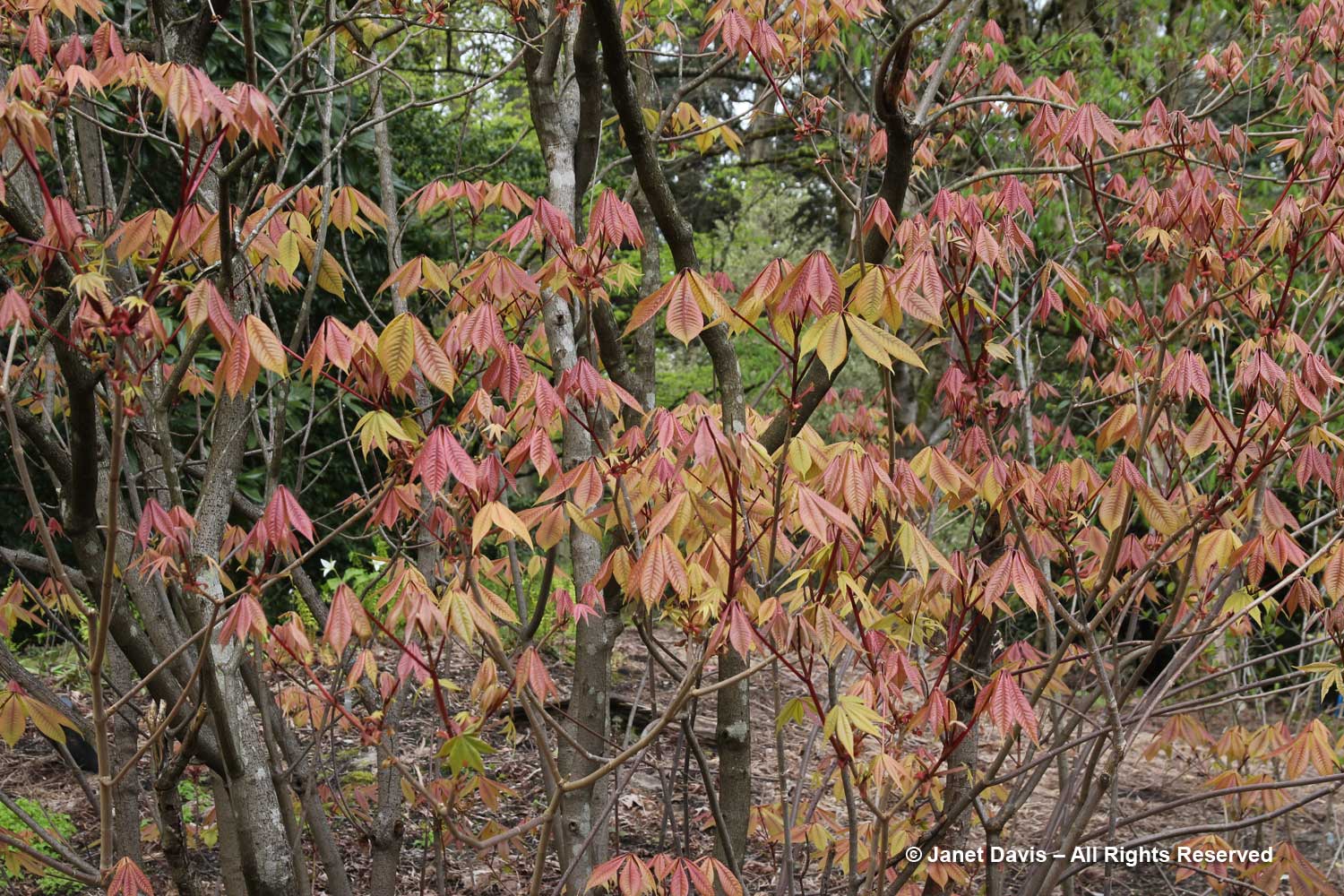
…. and familiar to me, a Torontonian, are showy trilliums (Trillium grandiflorum) and Solomon’s seals (Polygonatum biflorum).
We’ll head southwest again via the Woodland Garden. I believe it’s in this area where there are some wonderful magnolias, including New Zealand-bred ‘Star Wars’, below.
I love seeing all these western mayflowers (Maianthemum dilatatum) or “false lily-of-the-valley” carpeting the ground under conifers.
From this area, we can reach the Southern Hemisphere Garden which contains an amazing collection of plants native to South America, Australia and New Zealand, below.
Lolog’s barberry (Berberis x lologensis) is a lovely hybrid between two Chilean species, Berberis darwinii and Berberis linearifolia.
Gunnera manicata is called Brazilian giant rhubarb and gradually becomes an immense plant here on the edge of Heron Pond.
We’ll leave the Southern Hemisphere Garden via the zigzag bridge……
….. and make our way down the path through the Ornamental Grass collection. VanDusen does a beautiful job of integrating the grasses into the garden with other plants, such as the crown imperial fritillaries under the goldenrain tree (Koelreuteria paniculata), below. At this time of spring, you can barely see the Bowles’ golden grass (Milium effusum ‘Aureum’) popping up….
… but a few weeks later, it makes a stunning contrast to the dusky cranebill (Geranium phaeum ‘Samobor’) here.
Another chartreuse leaved plant, Bowles’ golden sedge, Carex elata ‘Aurea’, shown below with Lychnis viscaria ‘Feuer’, causes understandable confusion, given the common name. Both were introduced by British horticulturist and garden writer Edward Augustus Bowles (1865-1954), who was also an important collector of crocuses, colchicums, snowdrops and snowflakes.
Not all the grasses in the garden are arranged in little vignettes, but it is fun to see the details of some, like tufted sedge (Carex elata).
Now we’ll circle back on the path through VanDusen’s renowned Black Garden. Though it’s at its best later in the season, it is still stunning in springtime, with its wine-red tulips, barberries and heucheras, black mondo grass (Ophiopogon planiscapus ‘Nigrescens’) and chartreuse highlights.
On my visit in May 2014, one of VanDusen’s volunteers named Hughie greets me and she is so perfectly colour-coordinated, I ask her to stroll through for my camera.
I adore this combination of ‘Gold Heart’ bleeding heart (Lamprocapnos spectabilis) with dark ‘Queen of Night’ tulips.
Let’s make our way west to take a quick peek at the Perennial Border. It isn’t quite as grand in May as later in the season, but there are still lovely plants……
….. like these ‘Sky Wing’ Siberian iris….
….. and attractive vignettes such as Allium hollandicum ‘Purple Sensation’ and white Trollius x cultorum ‘Cheddar’ in front of the dark foliage of Ligularia ‘Britt-Marie Crawford’.
Visitors can find lots of spring design inspiration in the garden, like this Pulmonaria ‘Trevi Fountain’ with Epimedium x perellchicum ‘Frohnleiten’.
There are old-fashioned perennial favourites, too, such as pink gas plant (Dictamnus albus var. roseus).
The formal rose garden takes summer temperatures to begin to bloom, but in May, the perennial border flanking it starts out with a few narcissus….
…. before exploding in mid-late June with a purple profusion of bellflowers (Campanula latifolia var. macrantha), cranesbills (Geranium ‘Johnson’s Blue’) and catmint (Nepeta sp.)
Near the Loderi rhododendrons which launched our tour in my previous blog, hundreds of colourful tulips carpet the ground in front of British sculptor Sophie Ryder’s ‘Minotaur and Hare’, created for the Vancouver Biennale in 2009-11. Sadly, the little blue hare that the minotaur once cradled was stolen, not once, but twice.
Tulips, of course, are a big part of spring at VanDusen, but my favourite way to use them is in combination with spring perennials, as here with pink Bergenia ‘Eroica’. If I had to guess at the tulip, which was not labelled, I’d say the single late ‘Dordogne’.
Now we come to the finale of our tour, a beautiful spectacle you’re most likely to encounter between mid-May and early June: the gorgeous Laburnum Walk. Planted in 1975 under Director R. Roy Forster, the walk was modelled on the famous Laburnum Arch at Bodnant Garden in Wales. The long, yellow, pea-flowered trusses of golden chain tree (Laburnum x watereri ‘Vossii’) cascade over the walk, flanked by Allium hollandicum ‘Purple Sensation’, pink bistort (Persicaria bistorta ‘Superba’), forget-me-nots (Myosotis sylvatica) and bluebells (Hyacinthoides x massartiana).
Isn’t this perfect?
So our tour is over, but I’d like to pay tribute to my late mother Mary Healy, who accompanied me to VanDusen Botanical Garden over the years on many occasions. The photo below is from 1988. My mom taught me about gardening, was proud of me for choosing to make it my career, and loved nothing better than to walk with me for a while; then, as she got older, to settle on a bench with her newspaper as I happily roamed the garden with my cameras. I dedicate this blog to her.
*********
If you’d like to read about another exceptional Vancouver garden, visit the blog I wrote on UBC’s David Lam Asian Garden.
Other public garden blogs I’ve blogged about include Toronto Botanical Garden; Royal Botanical Gardens, Hamilton ON; Montreal Botanical Garden; New York Botanical Garden; Wave Hill, Bronx NY; New York’s Conservatory Garden in Central Park; New York’s High Line in May and in June; fabulous Chanticleer in Wayne, PA; the Ripley Garden in Washington DC; Chicago Botanic Garden; The Lurie Garden, Chicago; Lady Bird Johnson Wildflower Center, Austin TX; Denver Botanic Gardens; the Japanese Garden in Portland OR; the Bellevue Botanical Garden, Bellevue, WA; the Los Angeles County Arboretum; RBG Kew in London; Kirstenbosch, Cape Town; the Harold Porter National Botanical Gardens, South Africa; Durban Botanic Gardens; Otari-Wilton’s Bush, Wellington NZ; Dunedin Botanic Garden, NZ; Christchurch Botanic Gardens, NZ.

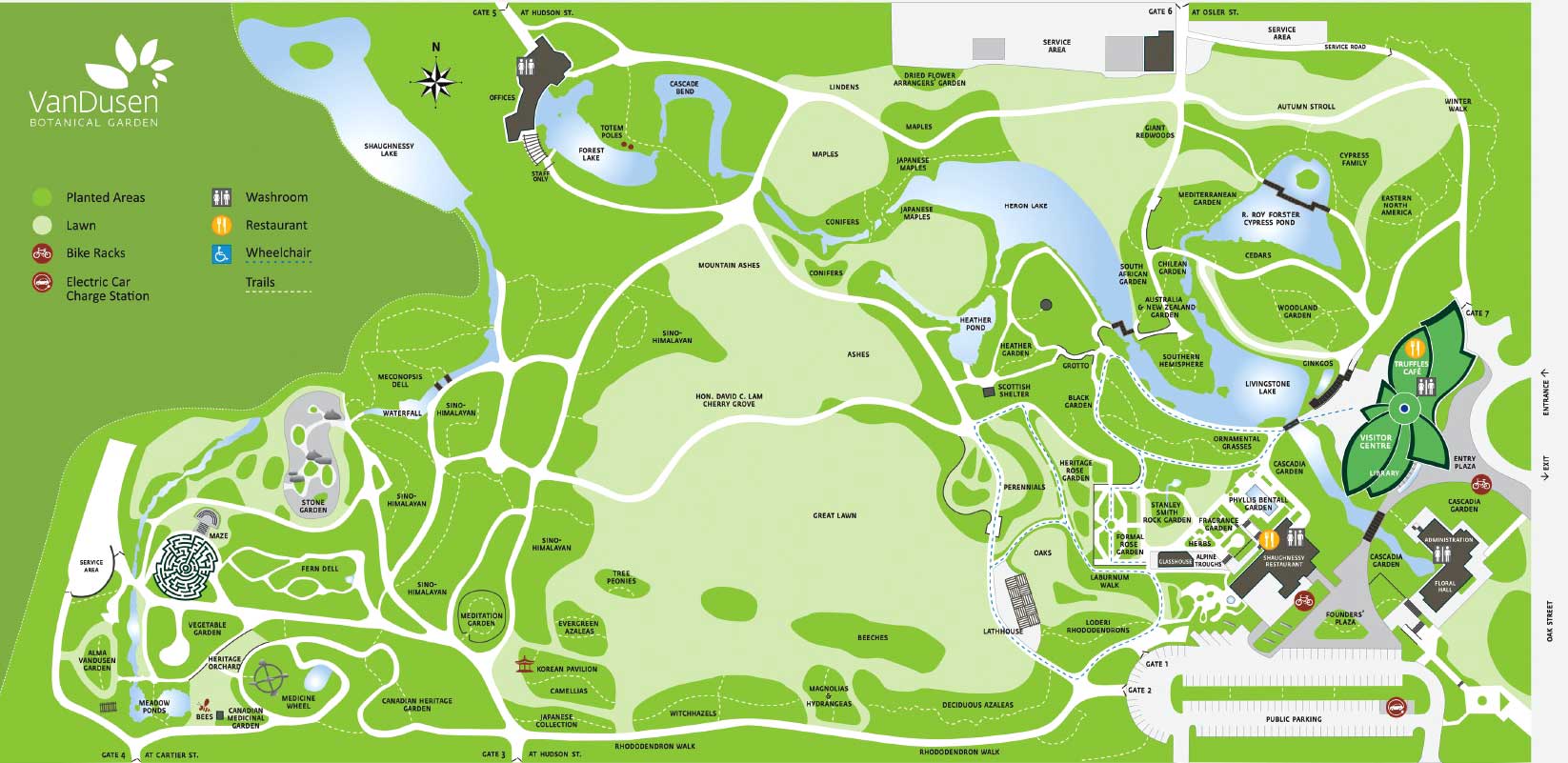
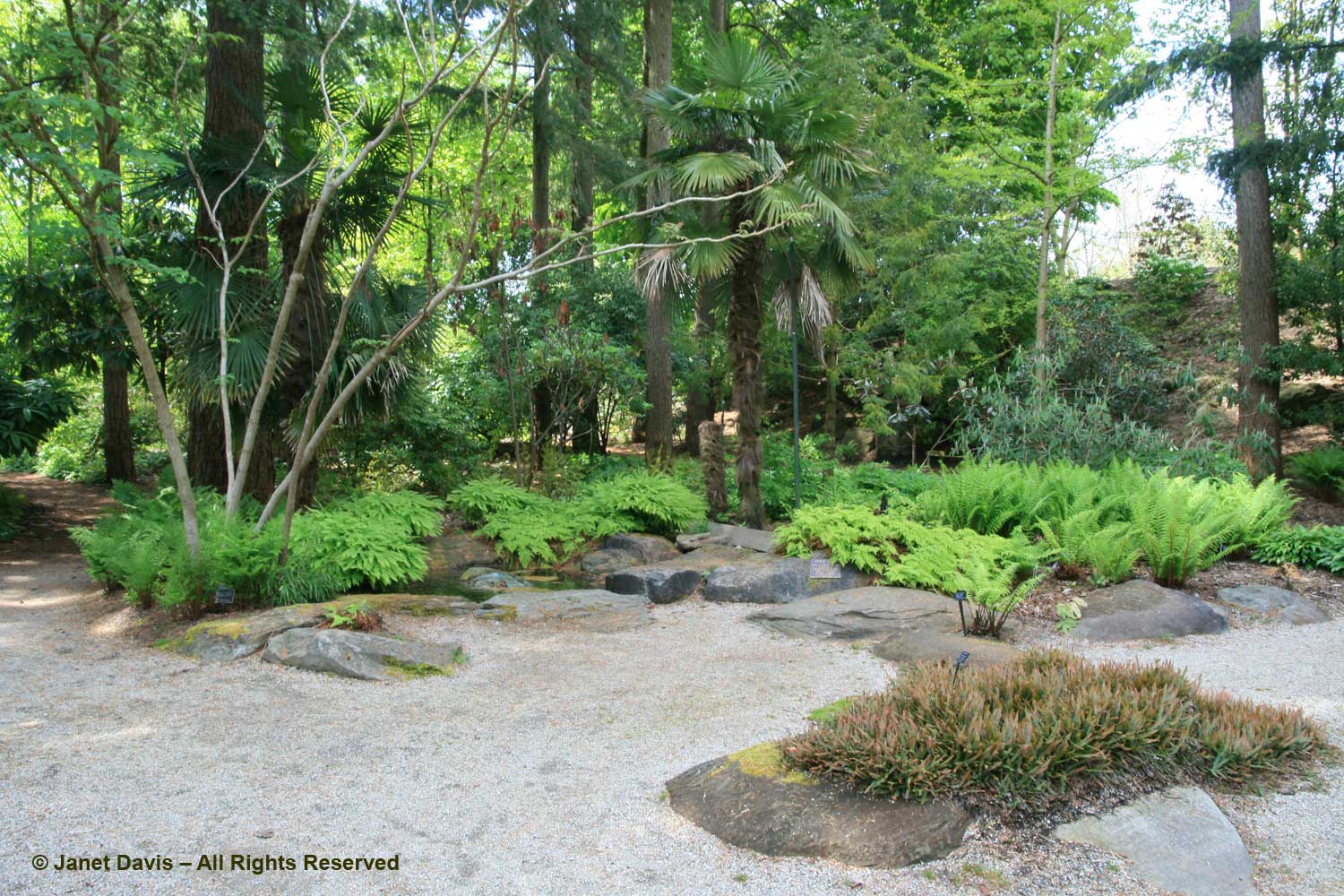
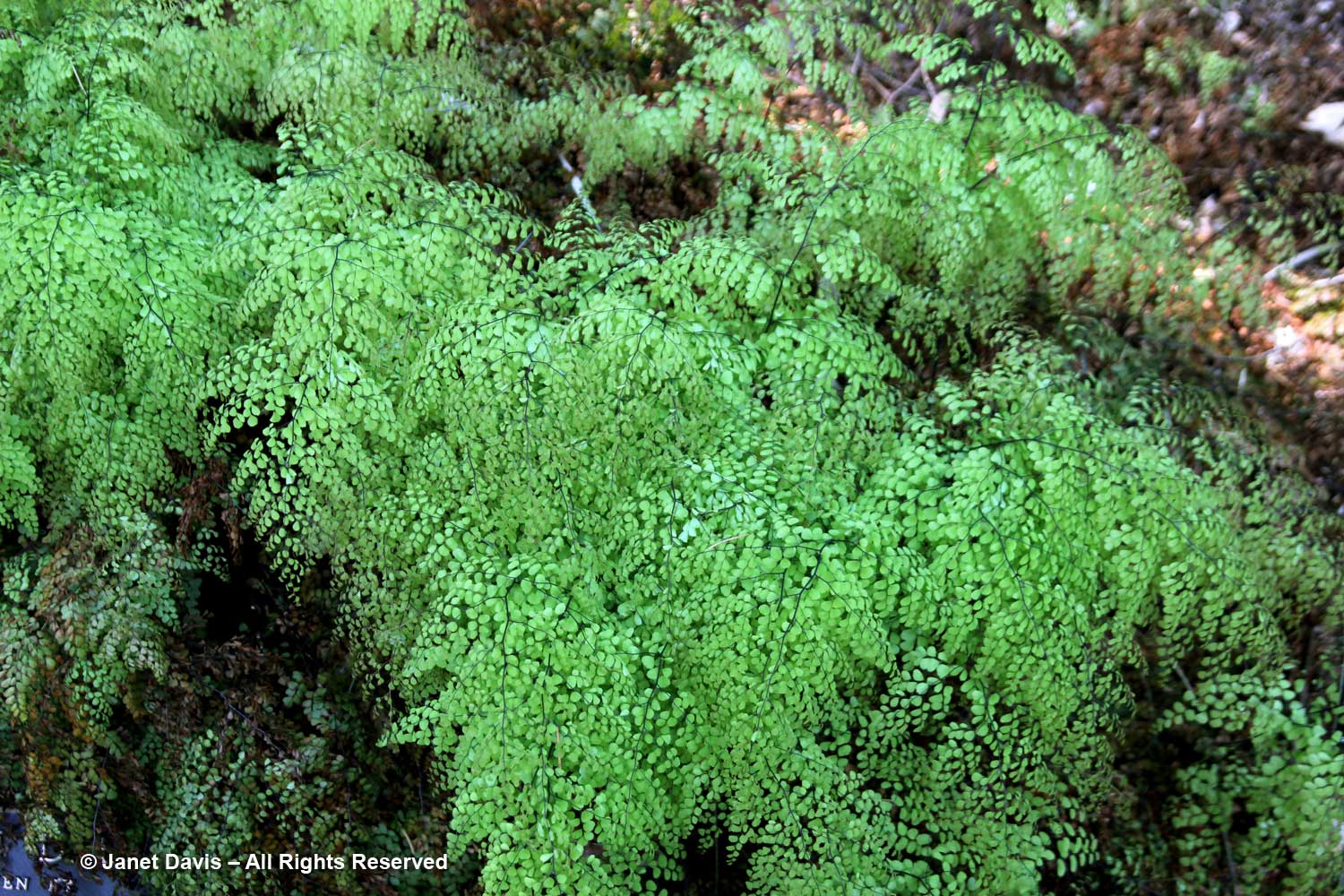

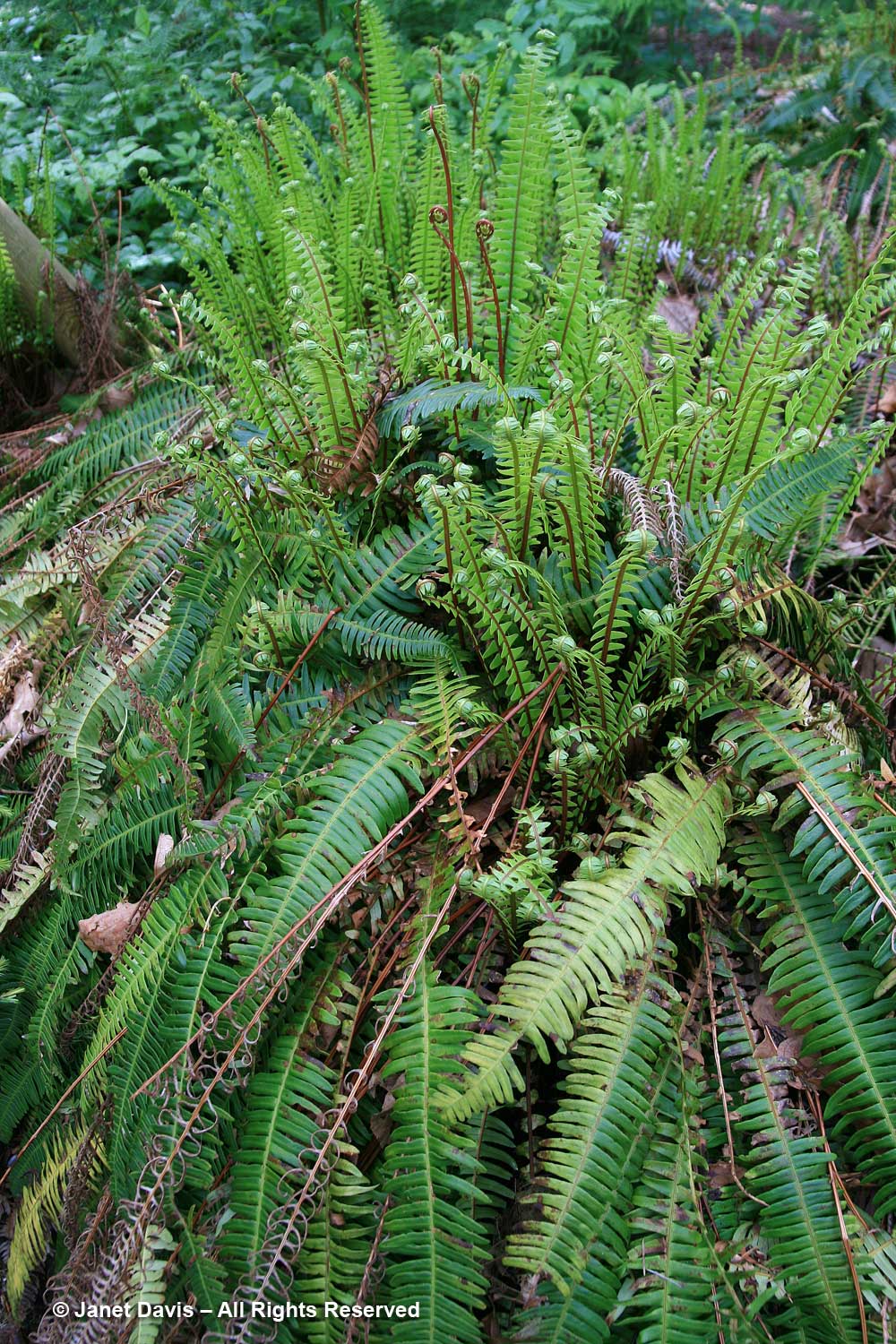
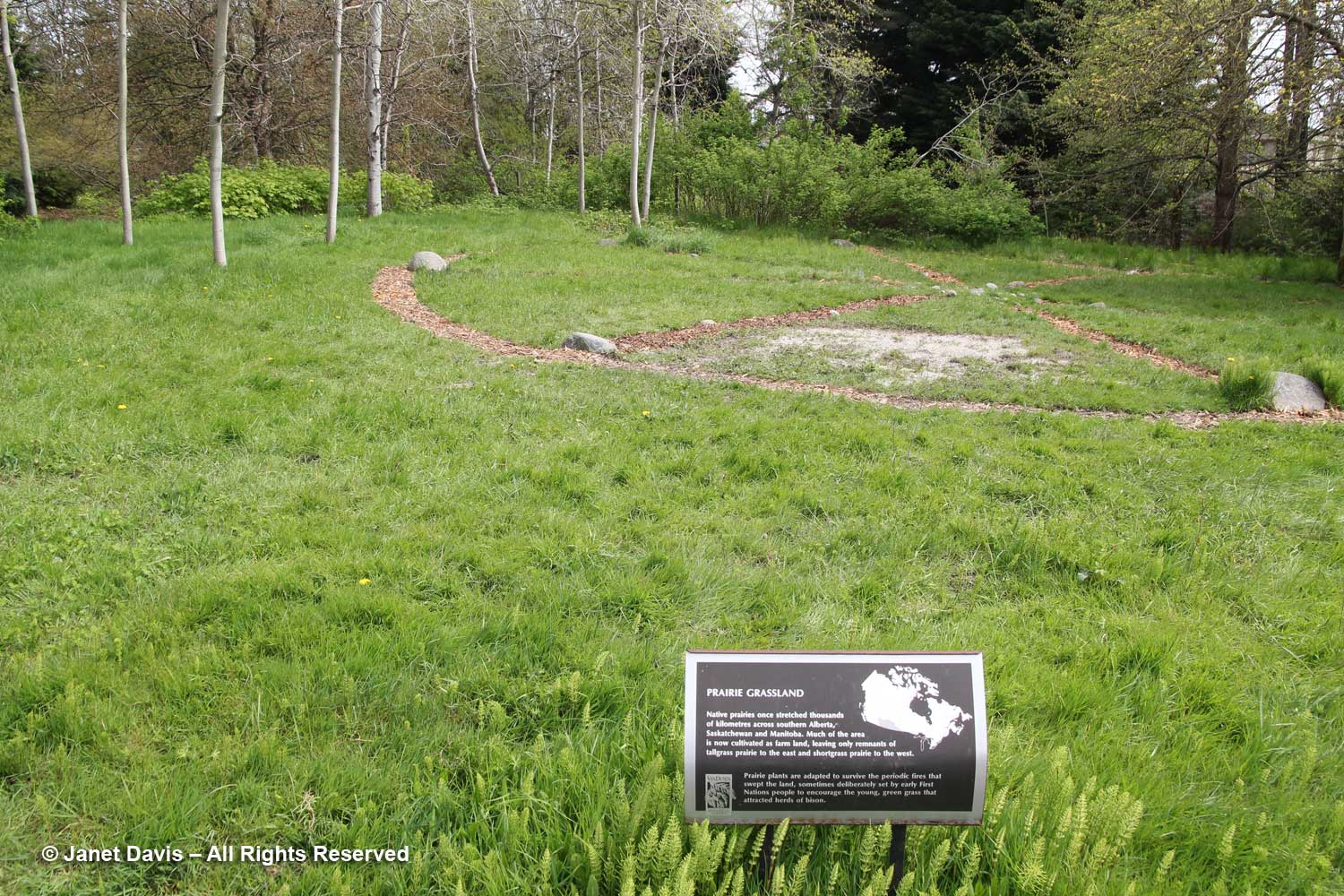
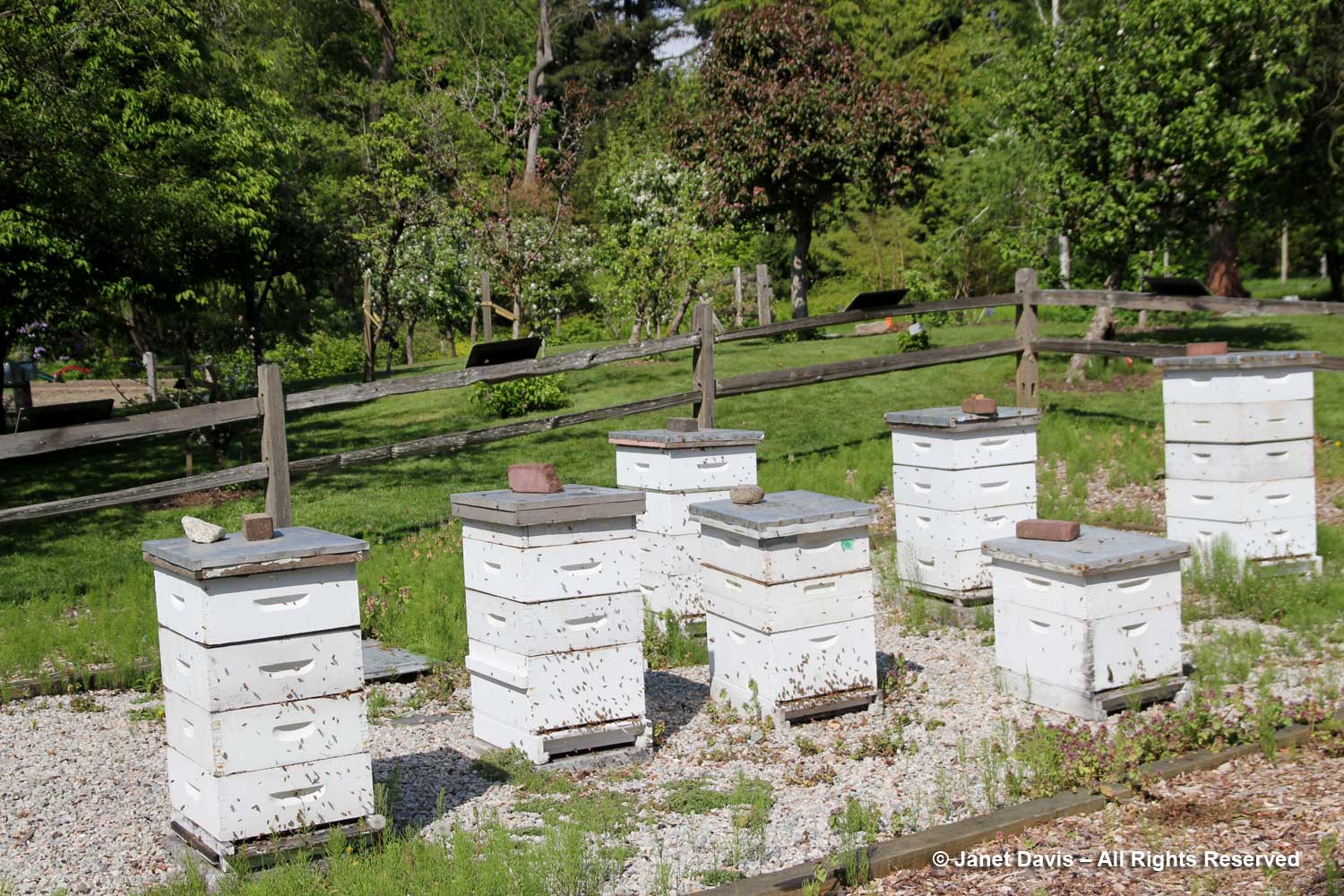
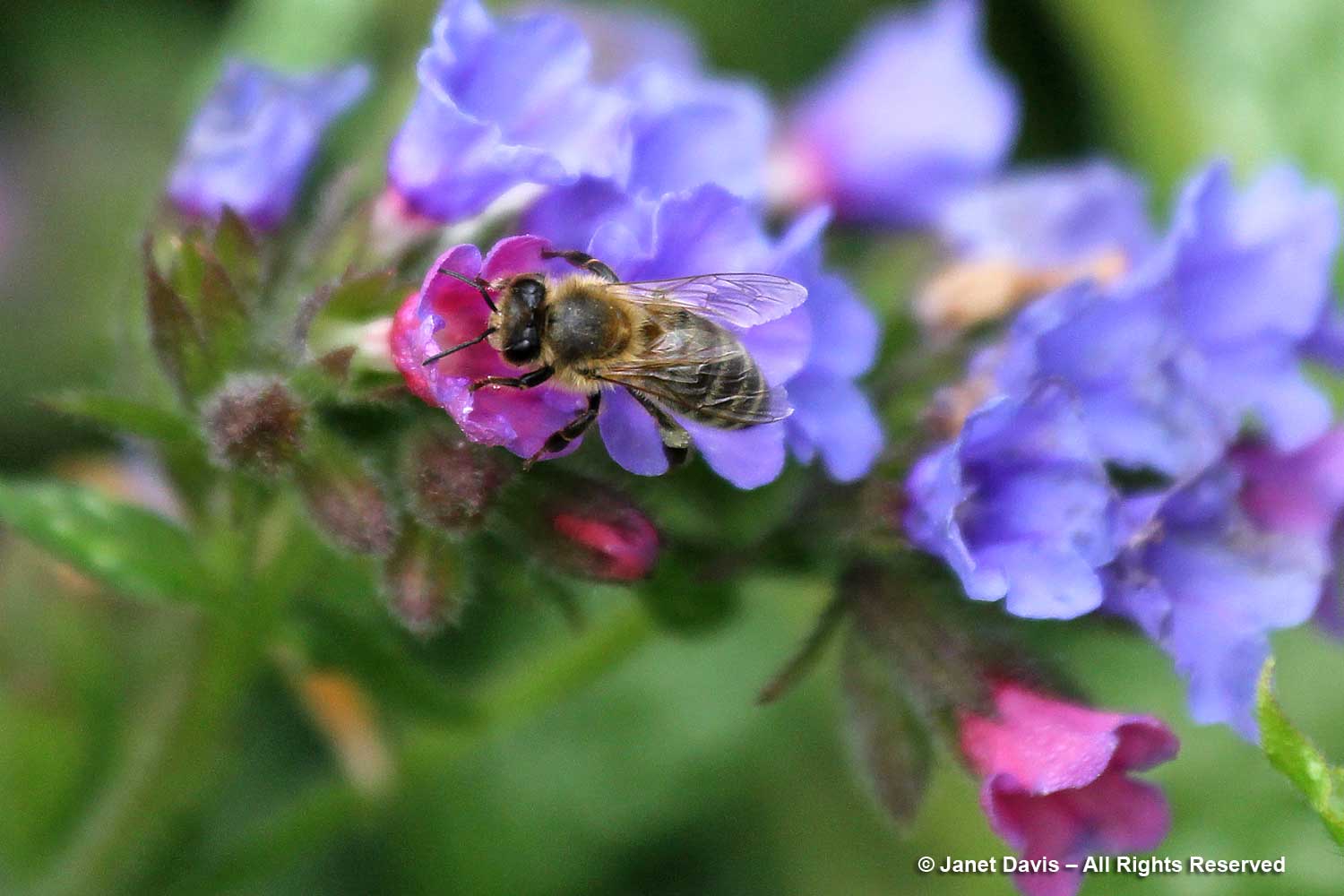
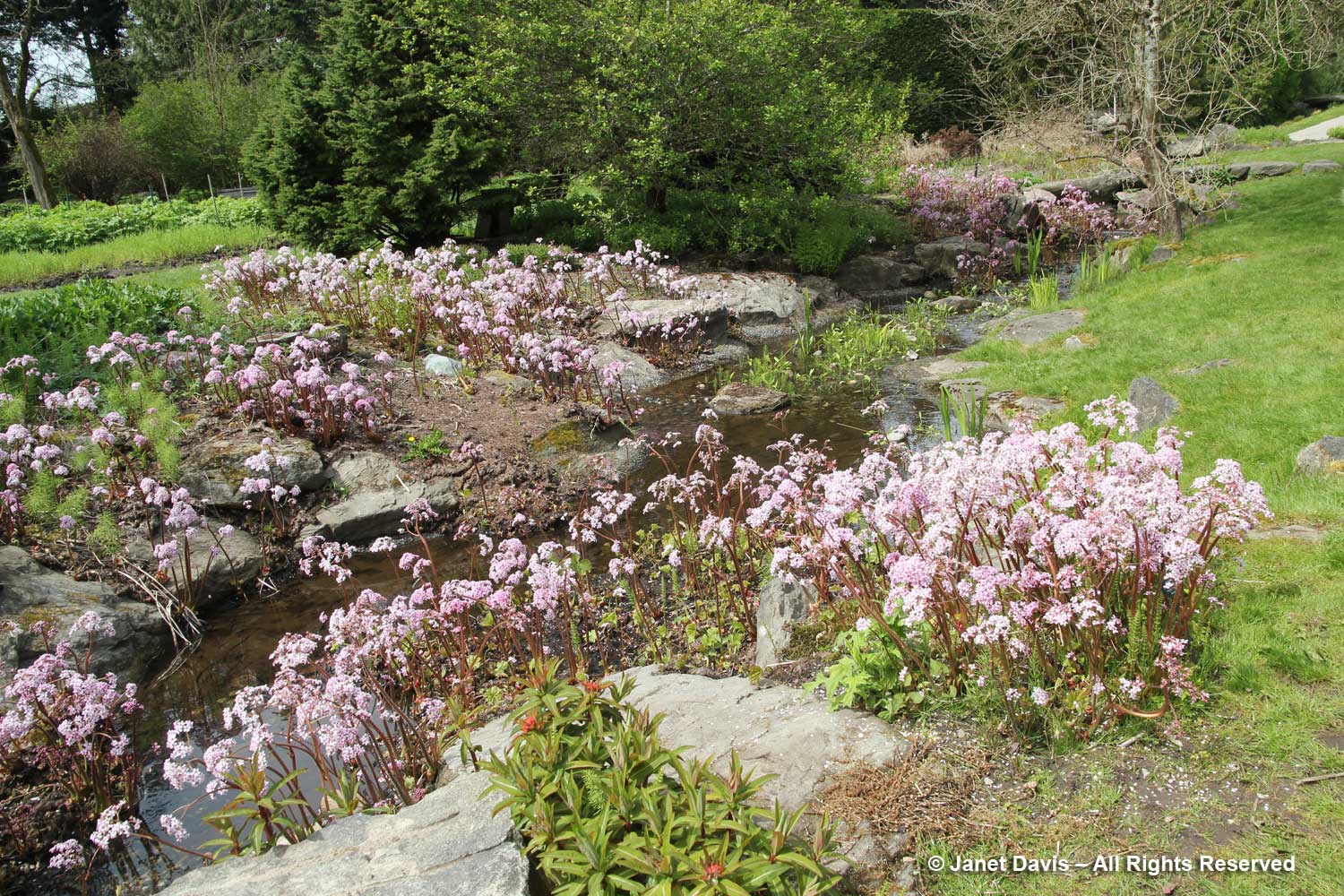
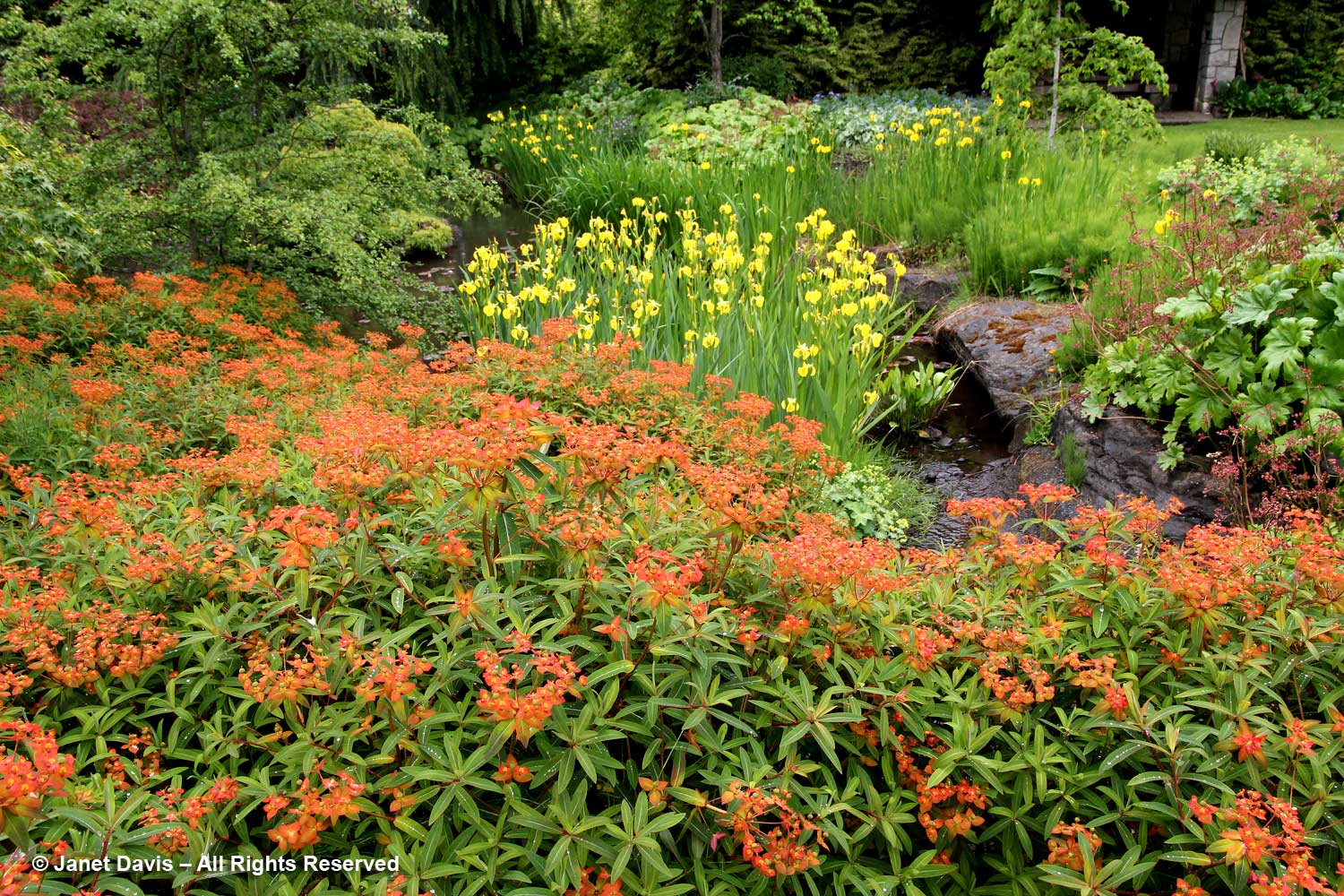

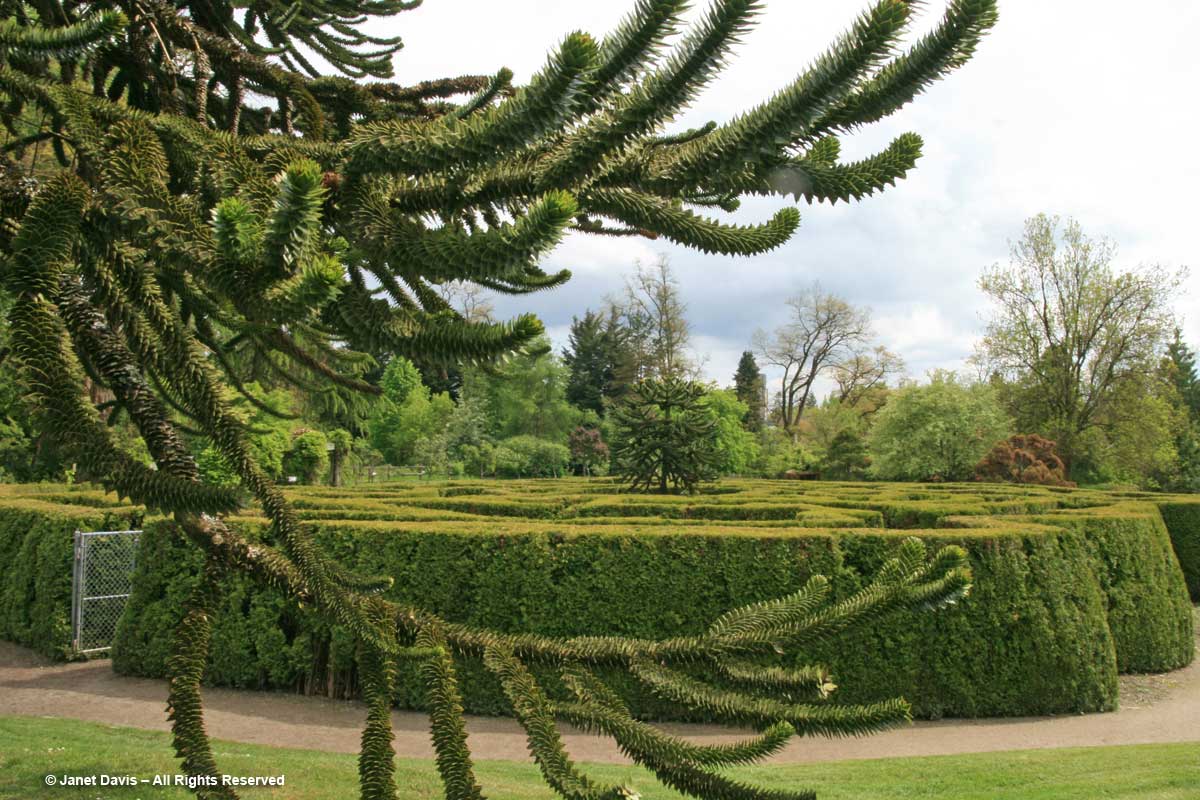
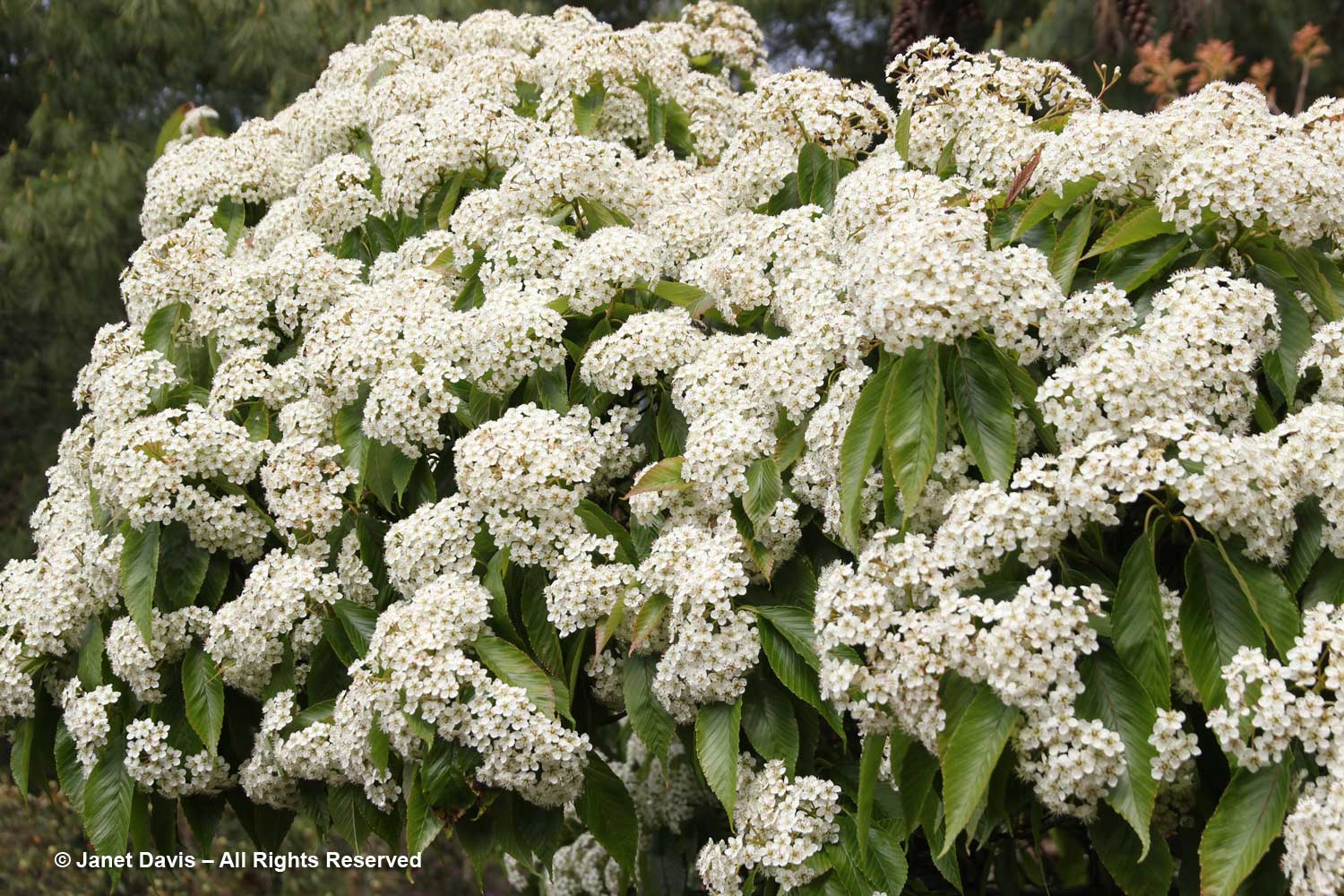
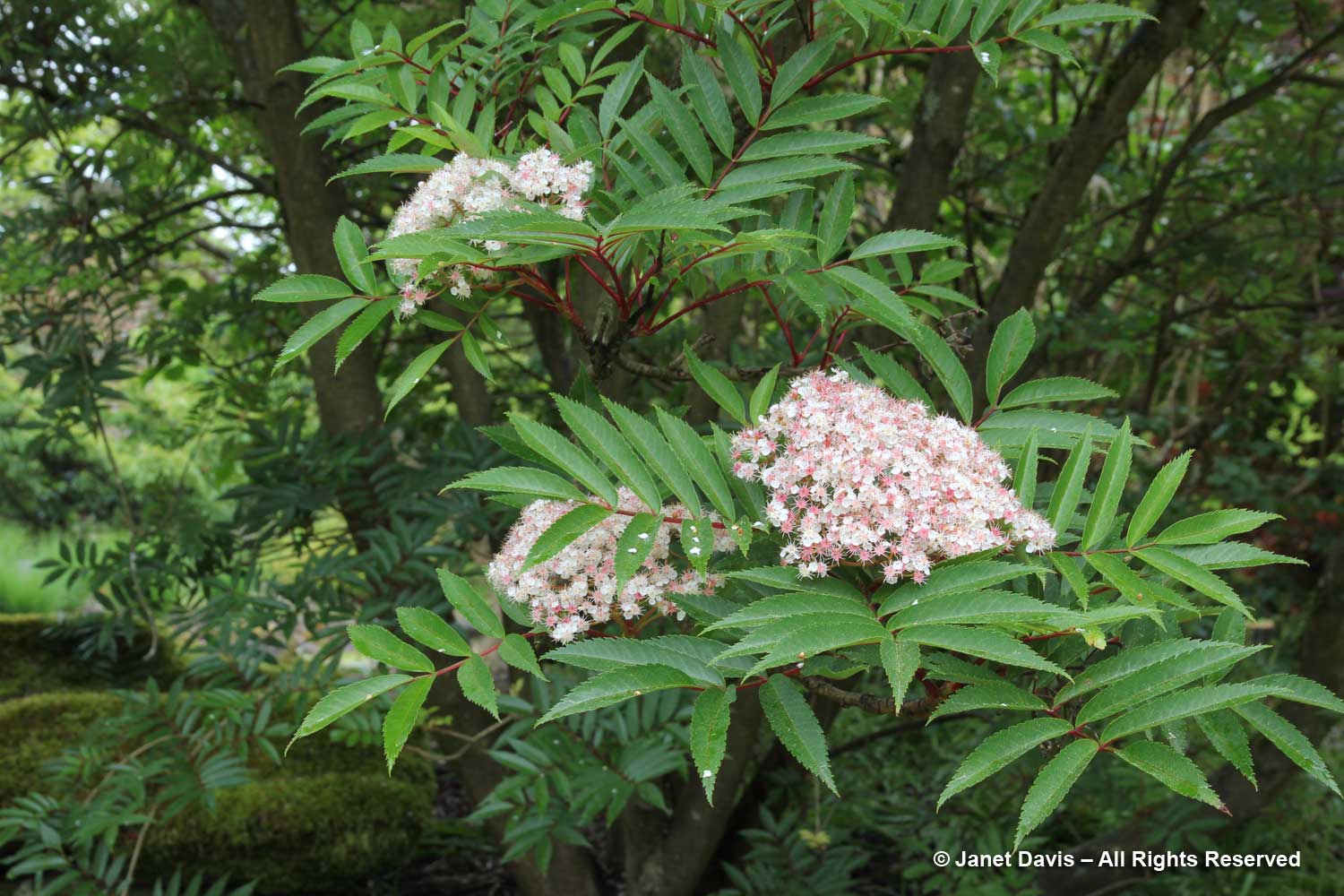
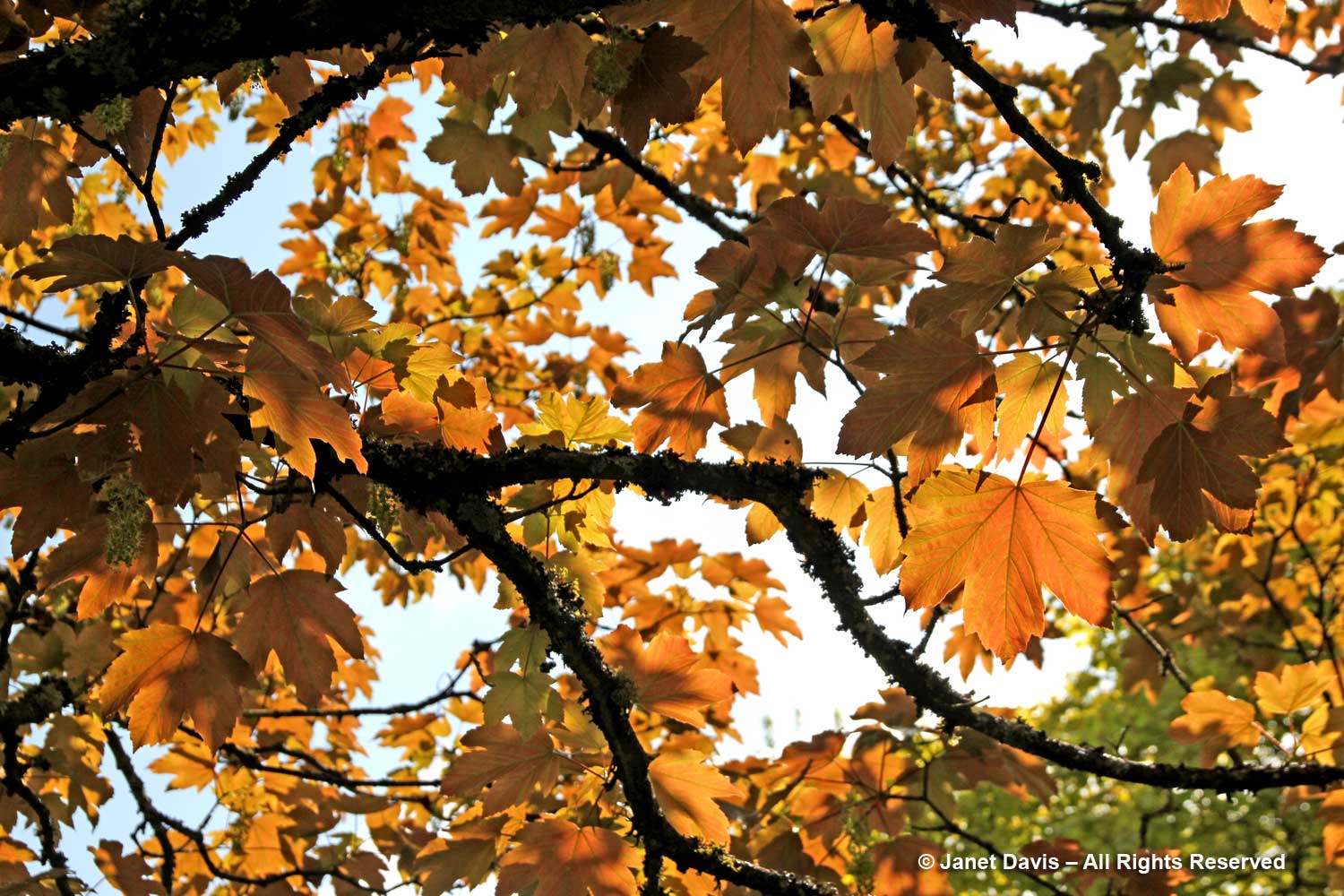
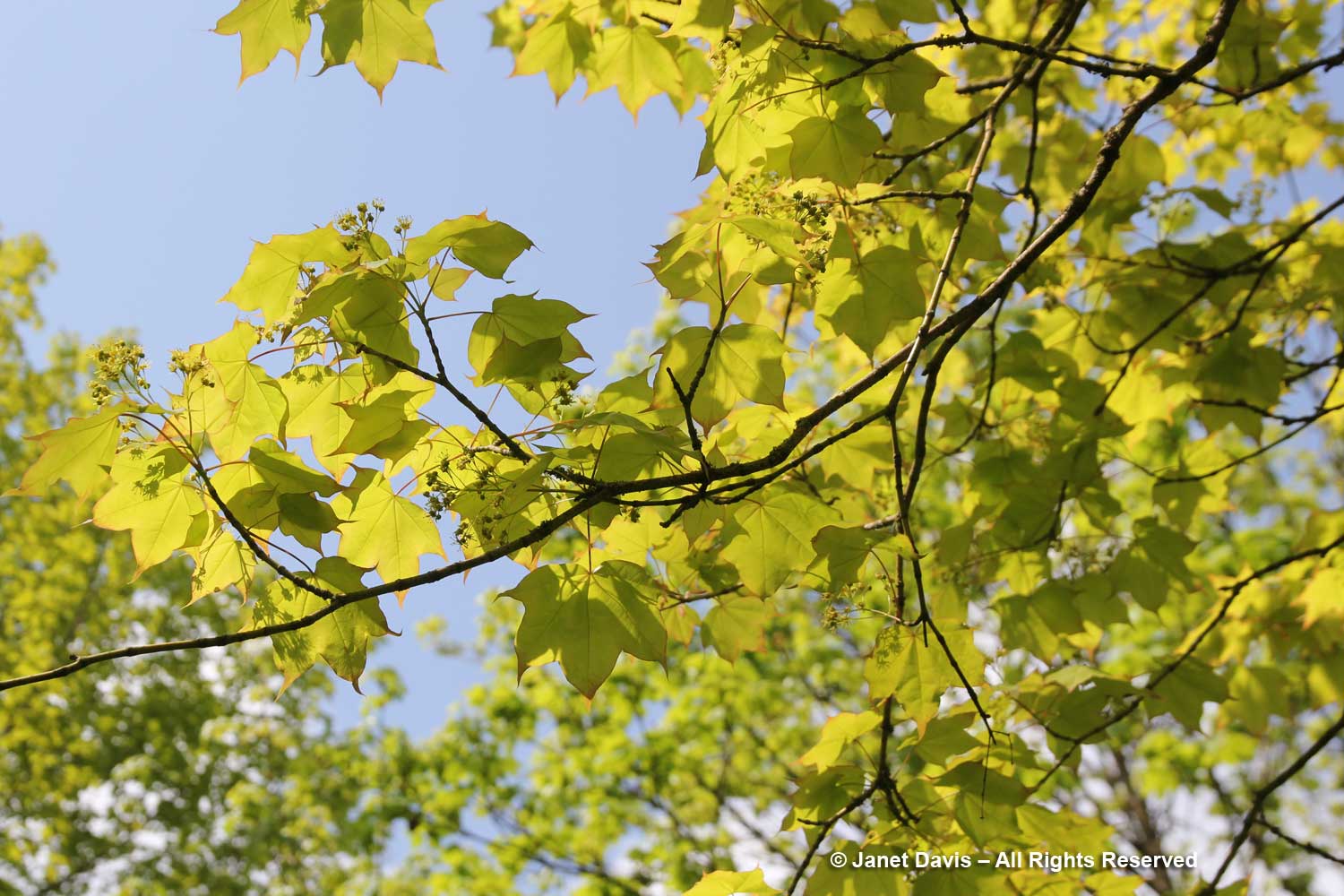
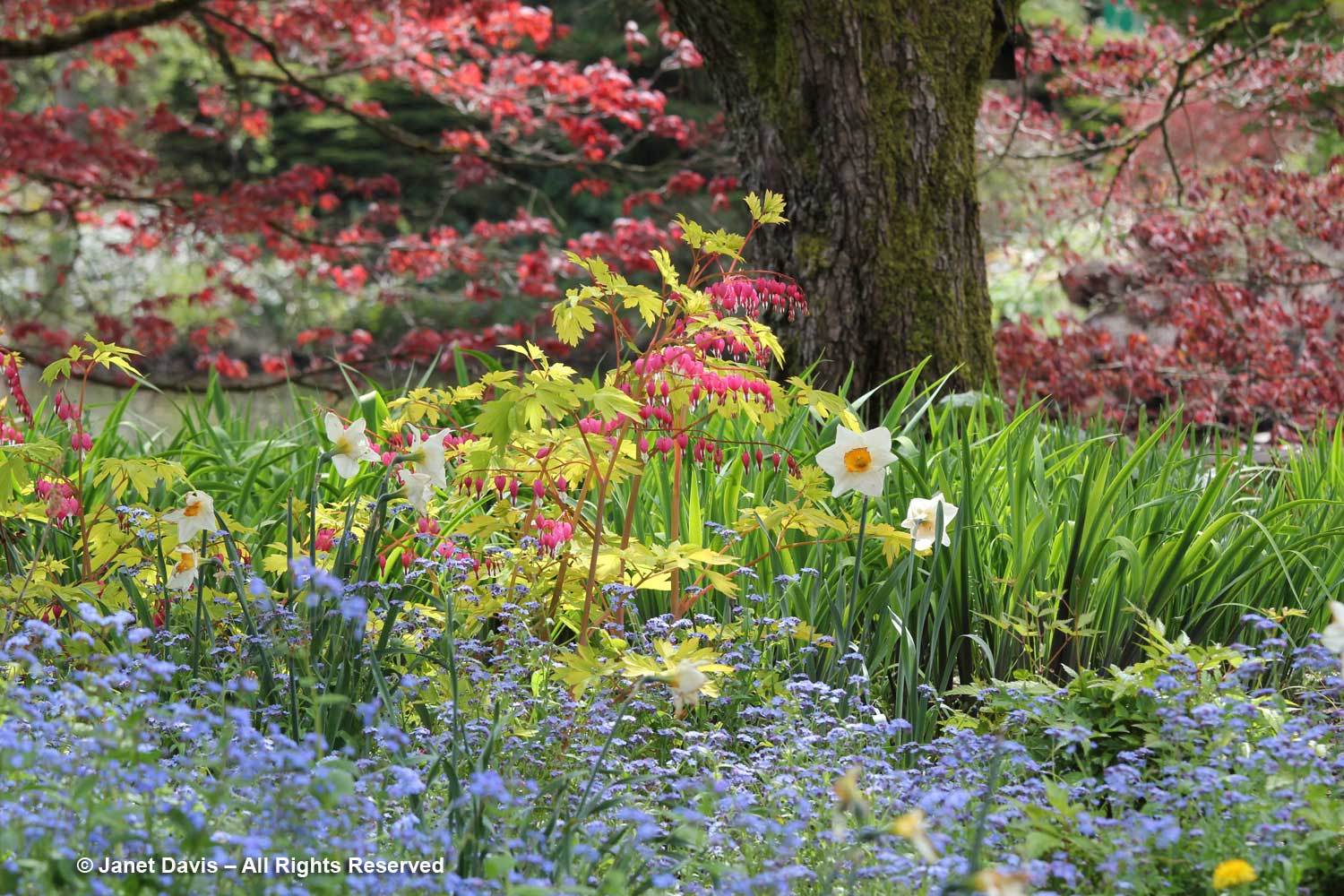
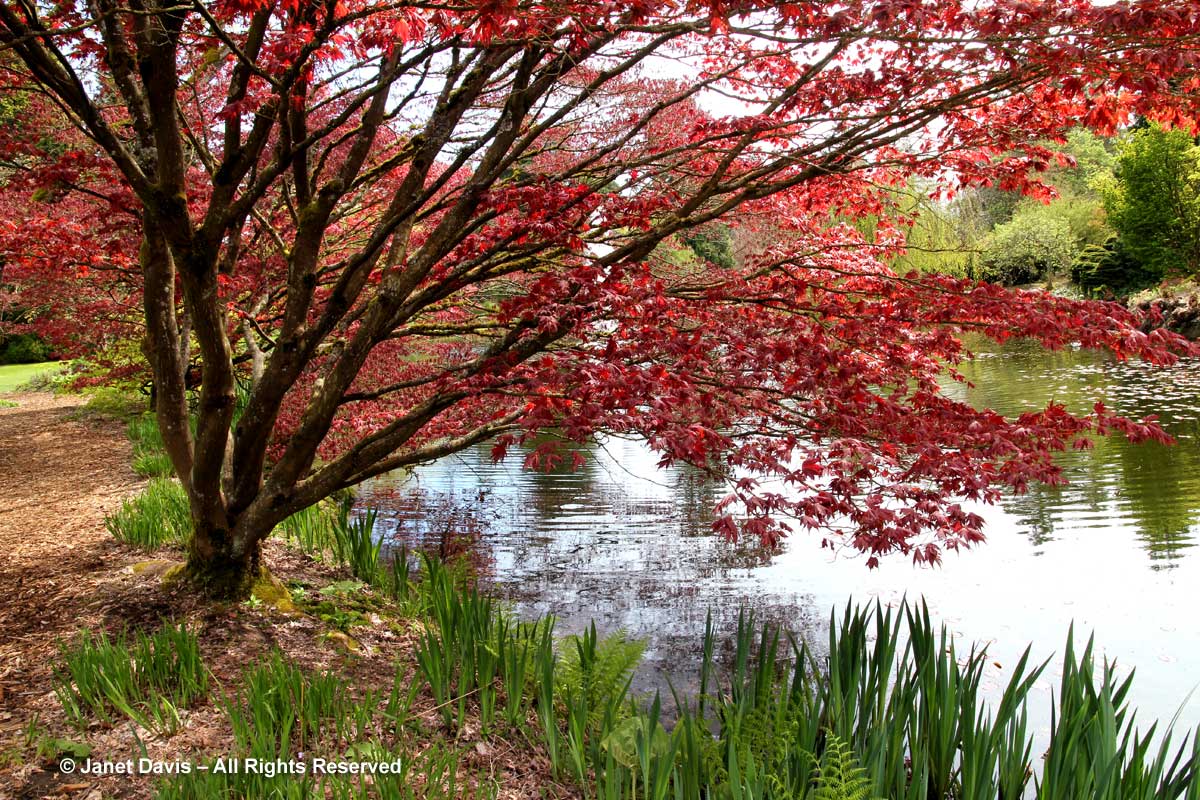
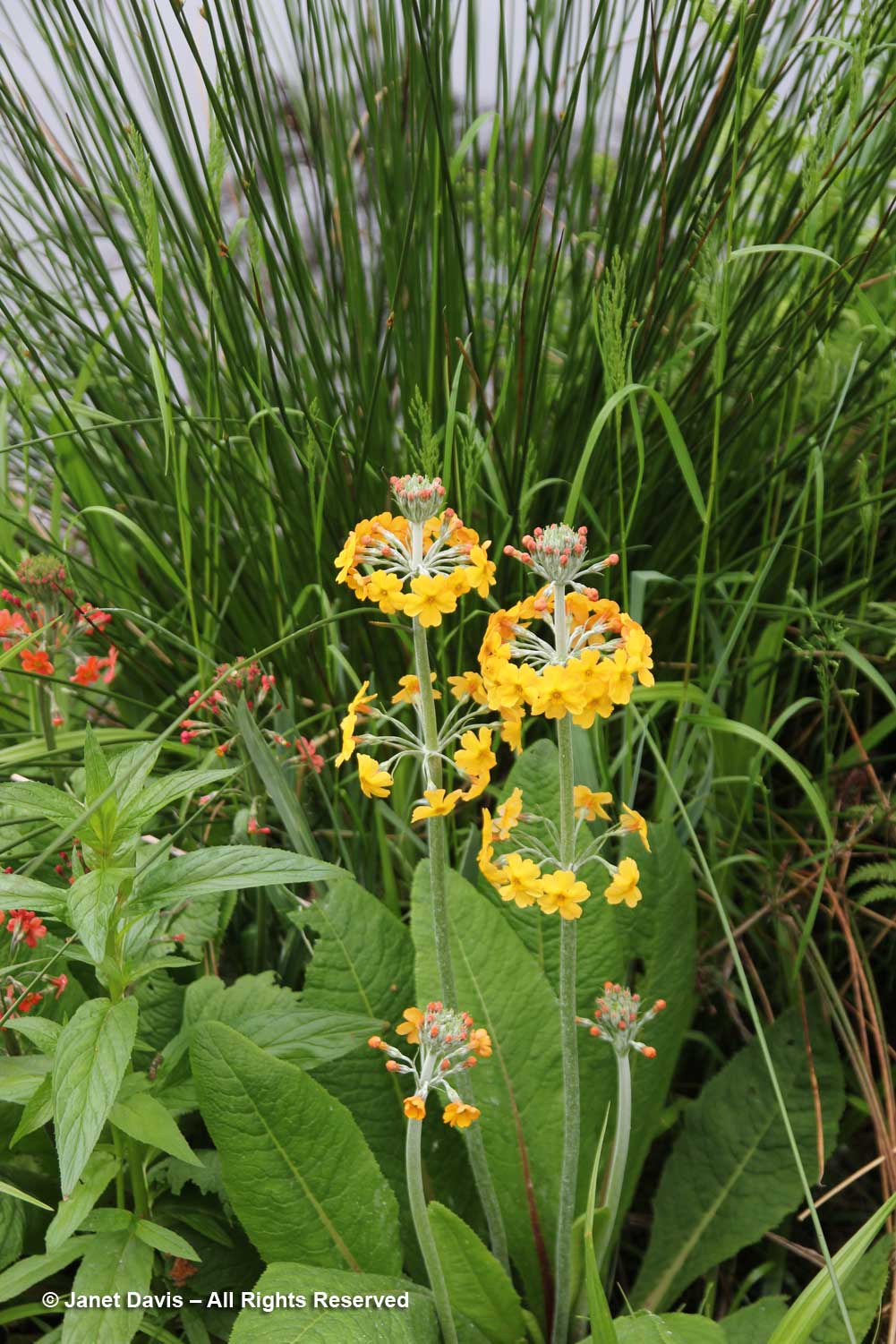
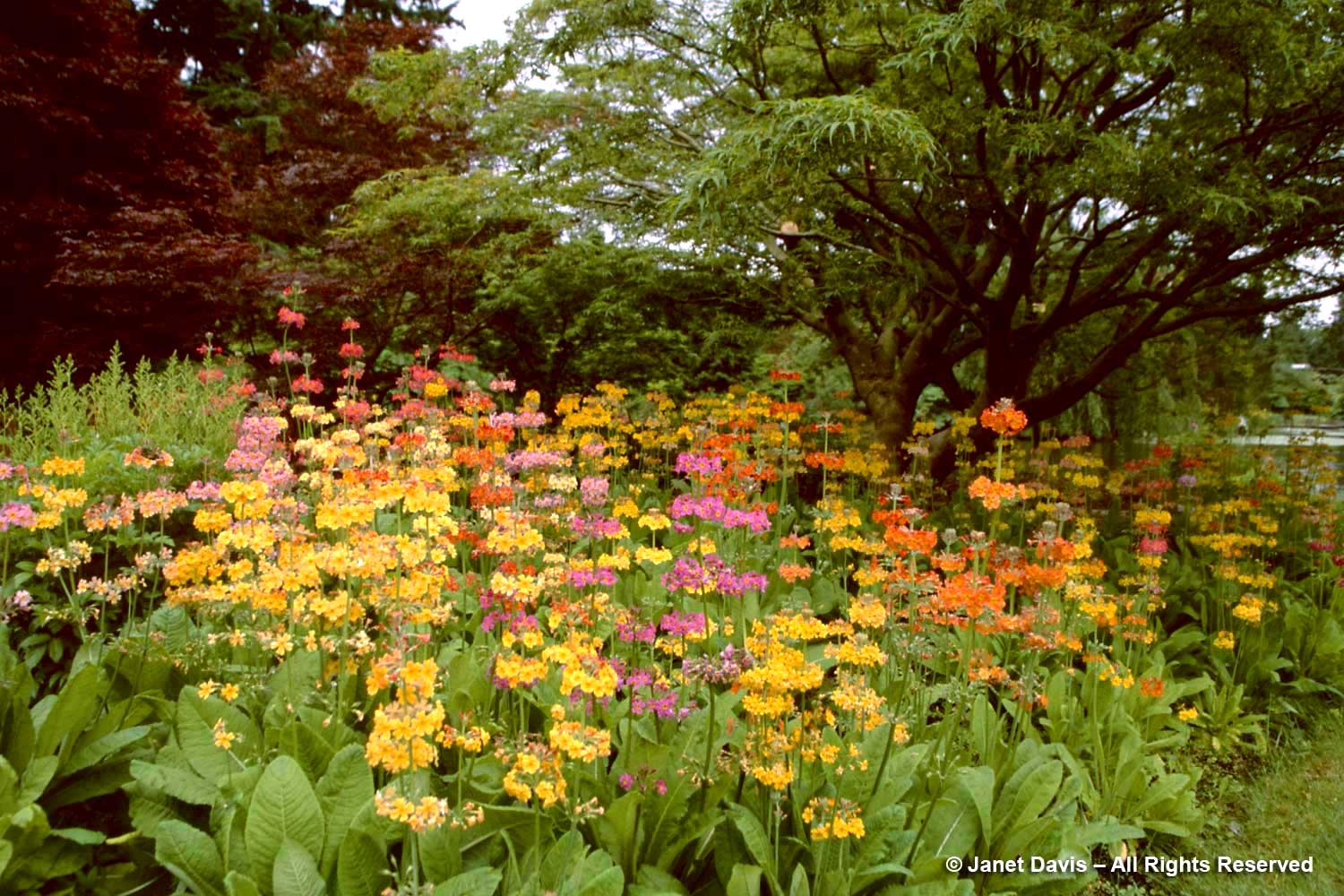
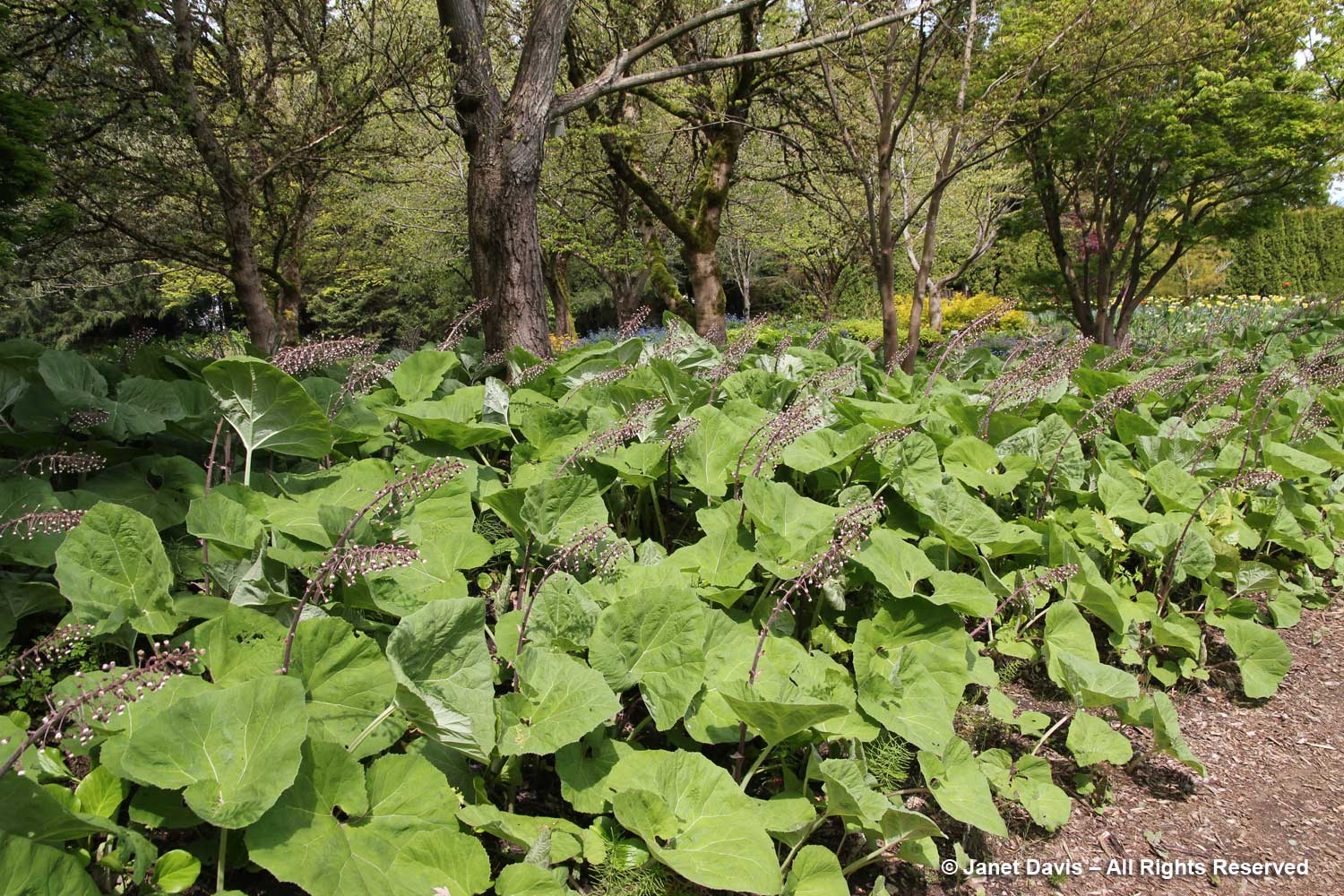
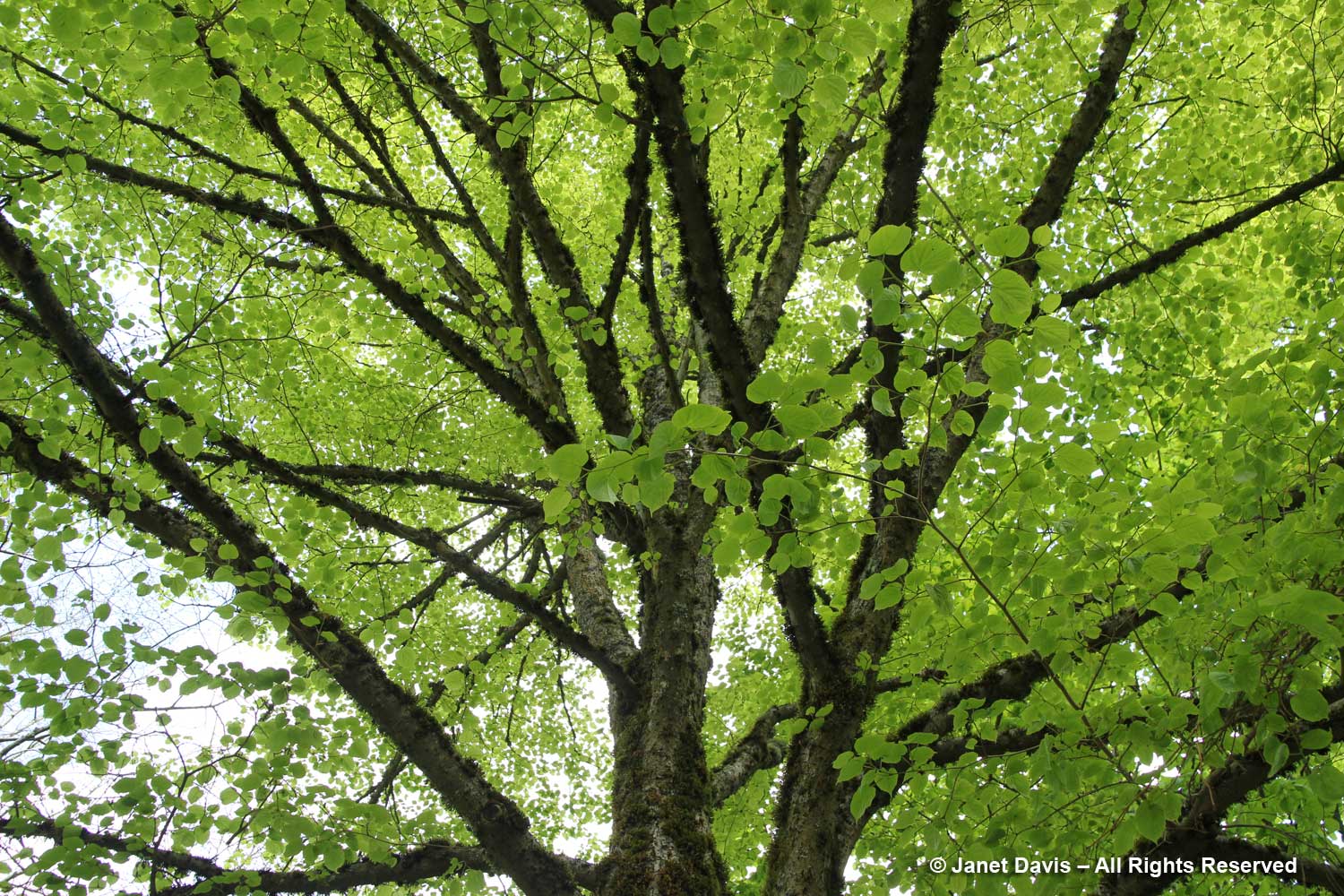
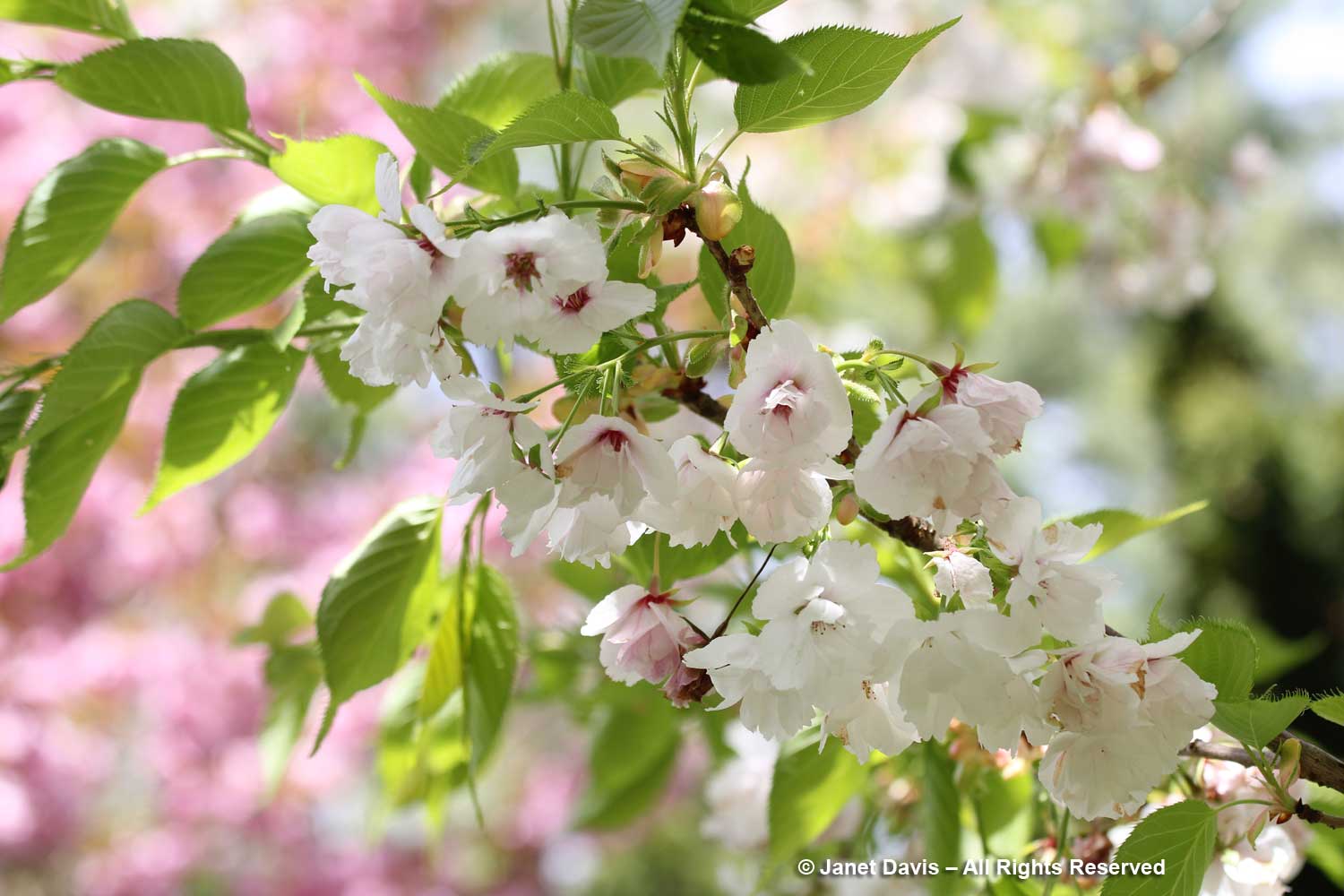
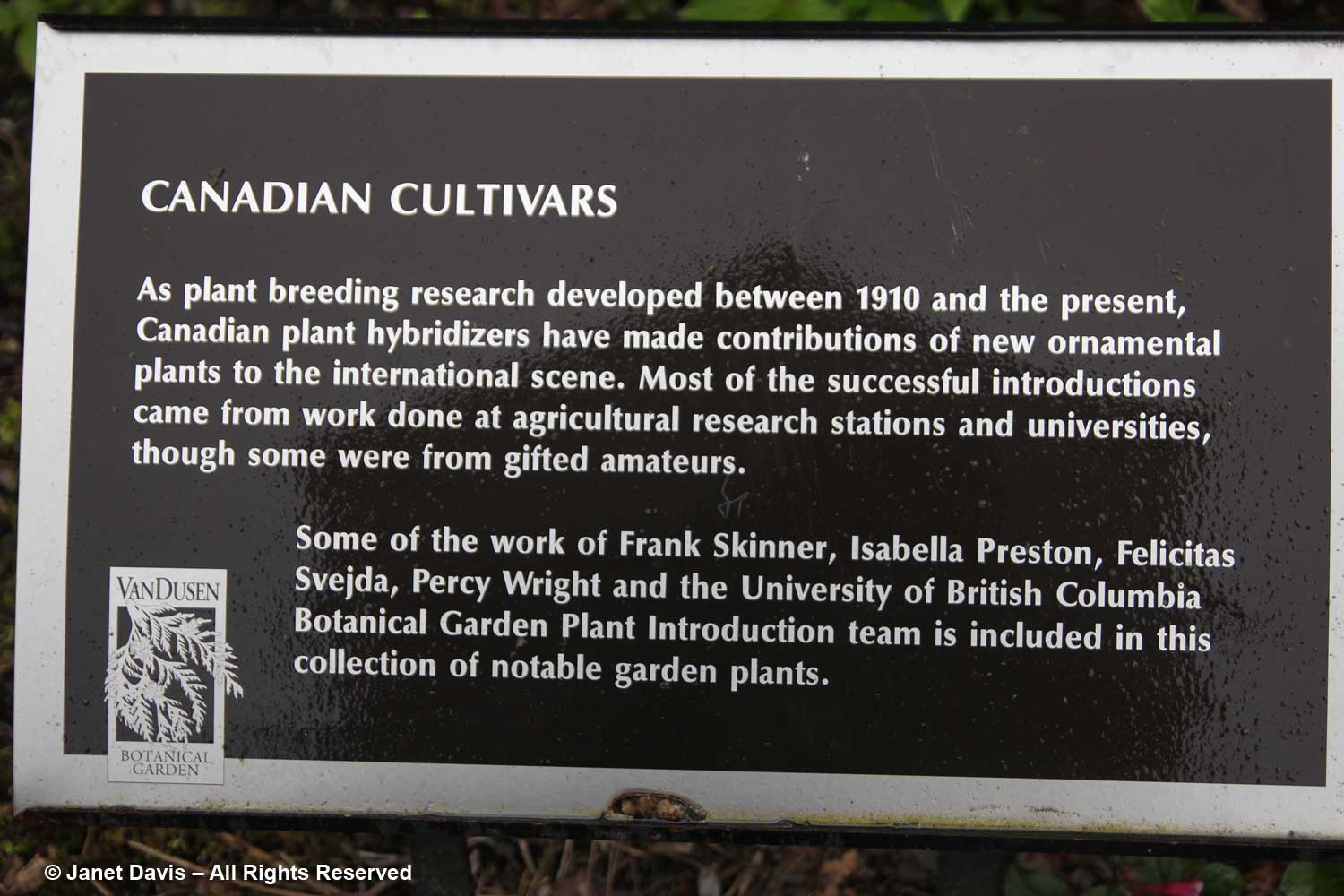
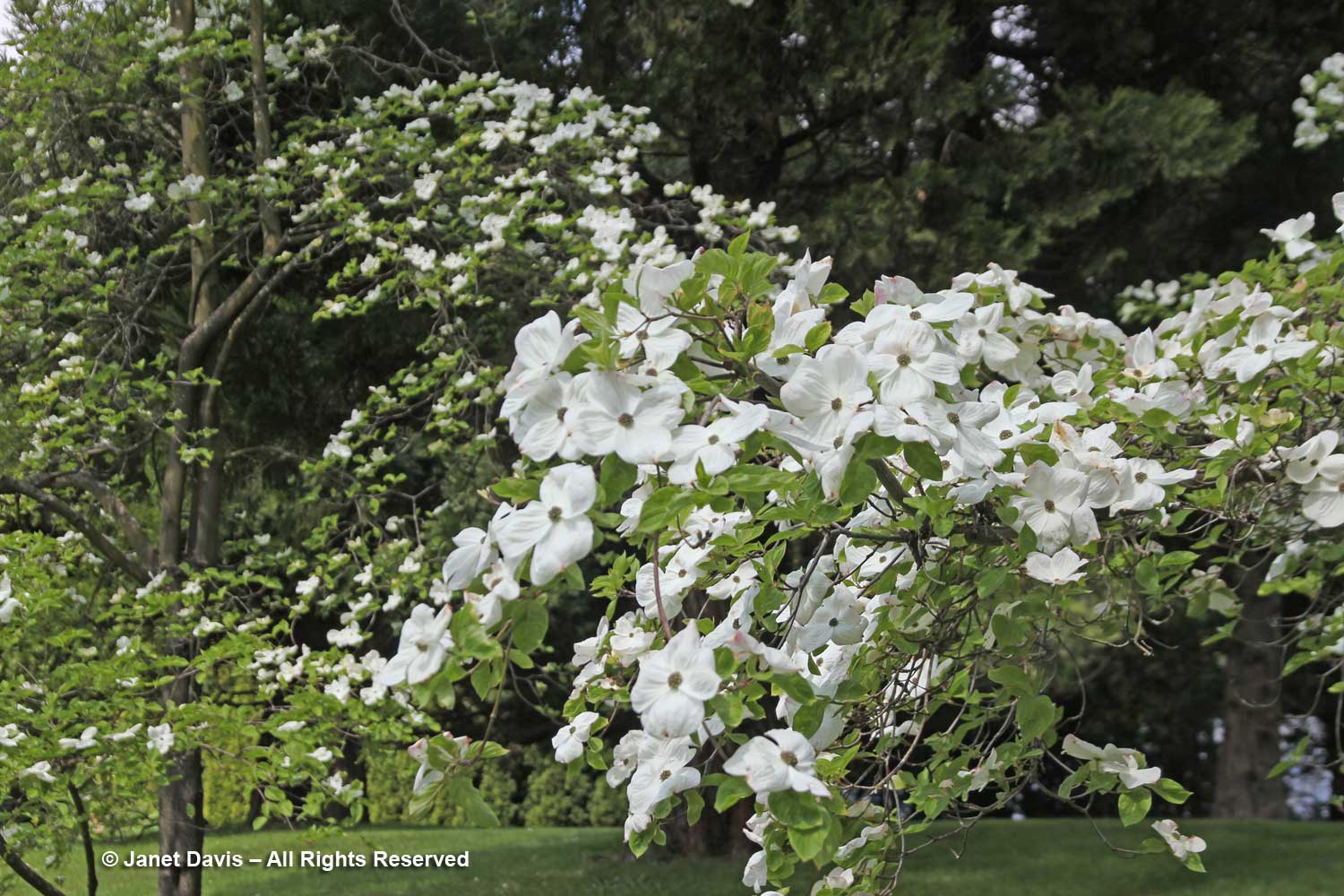
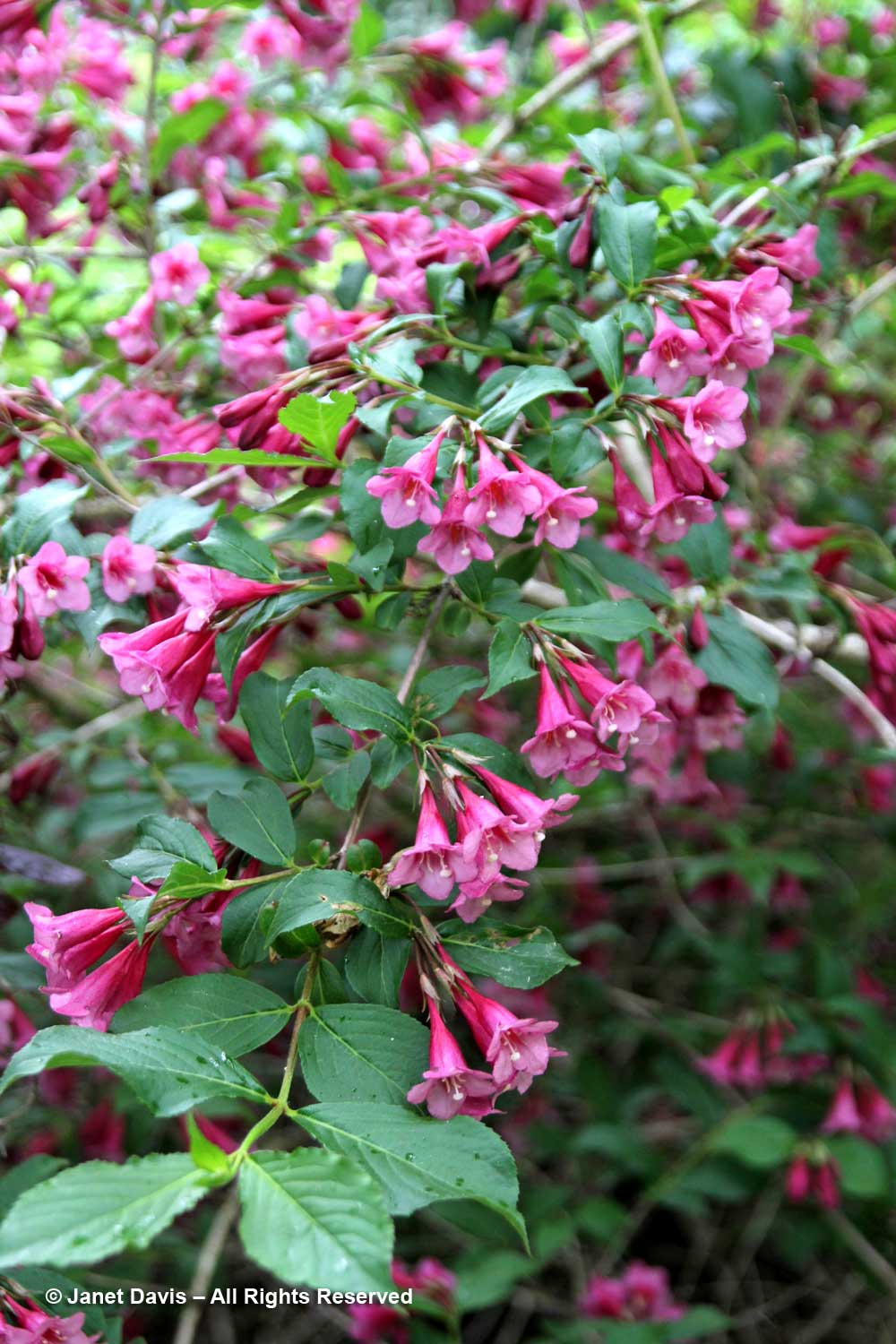
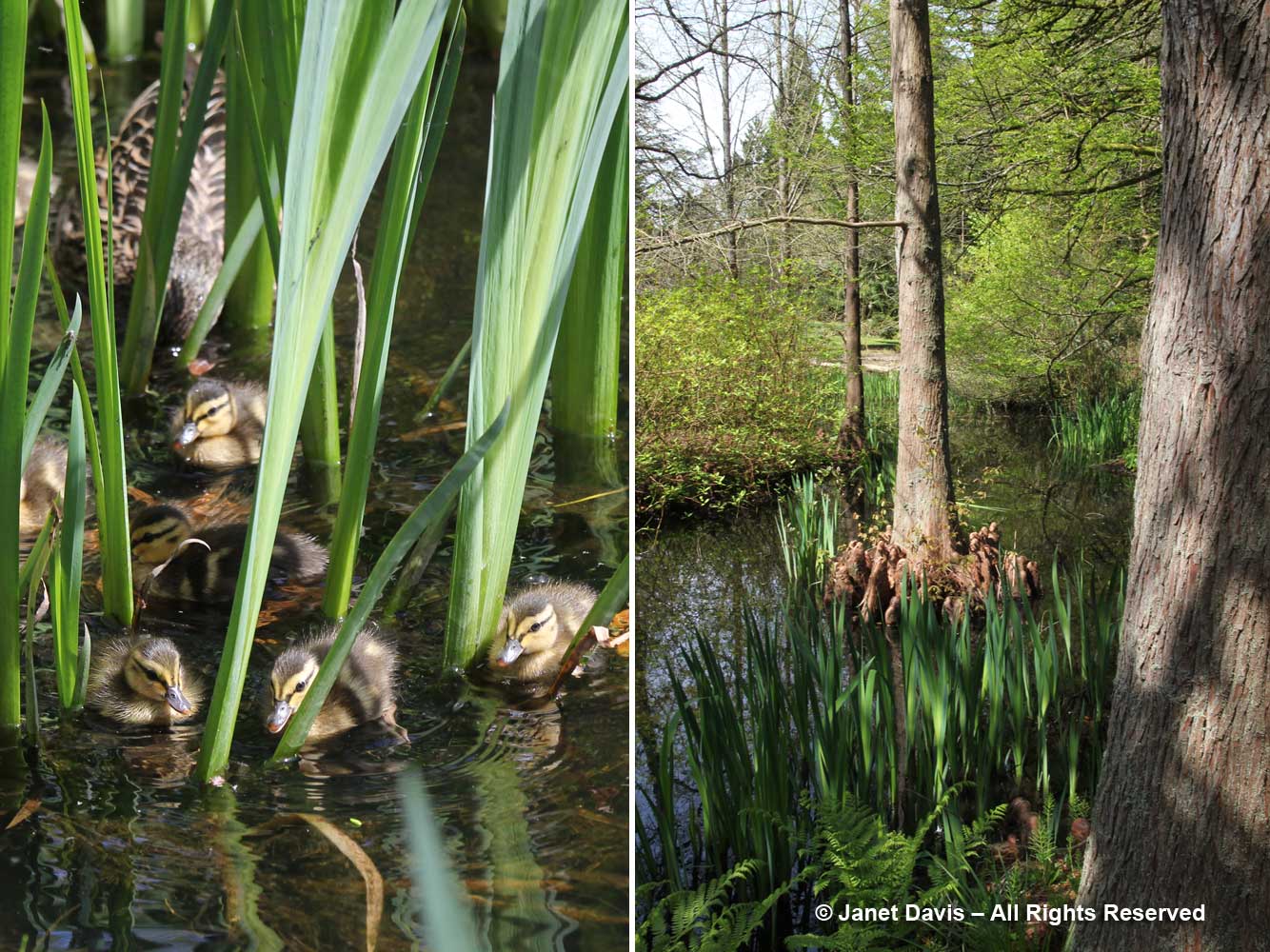
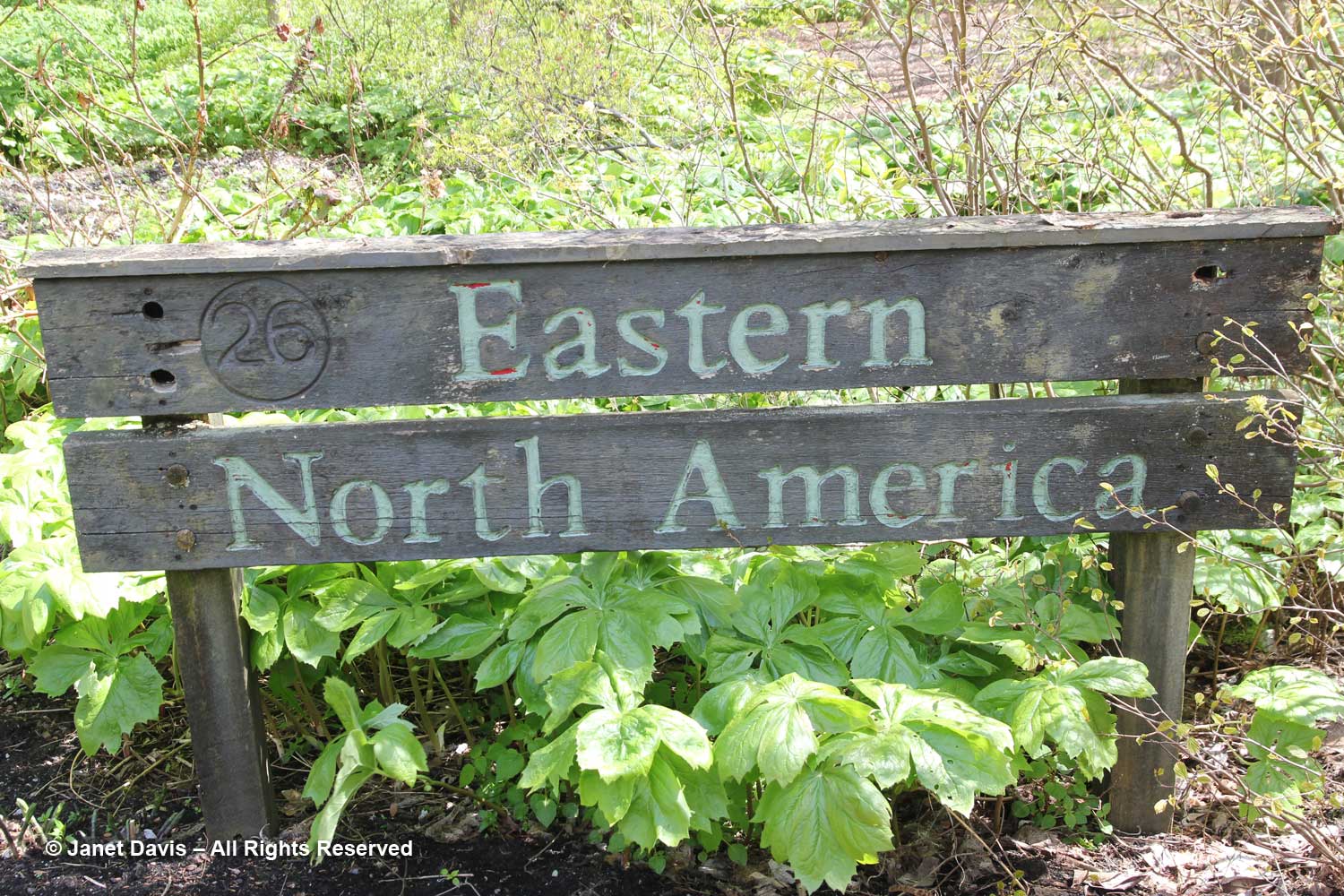
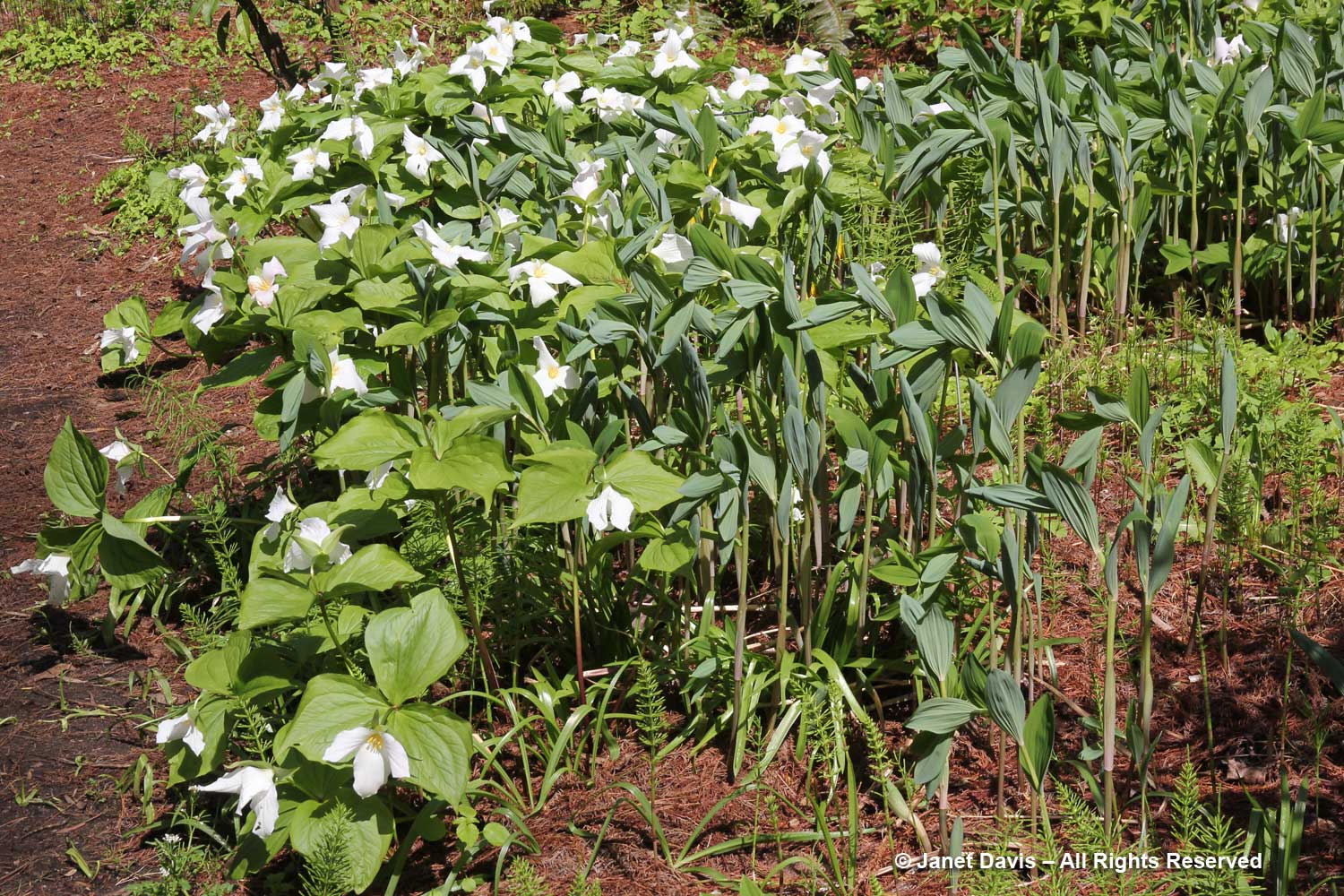
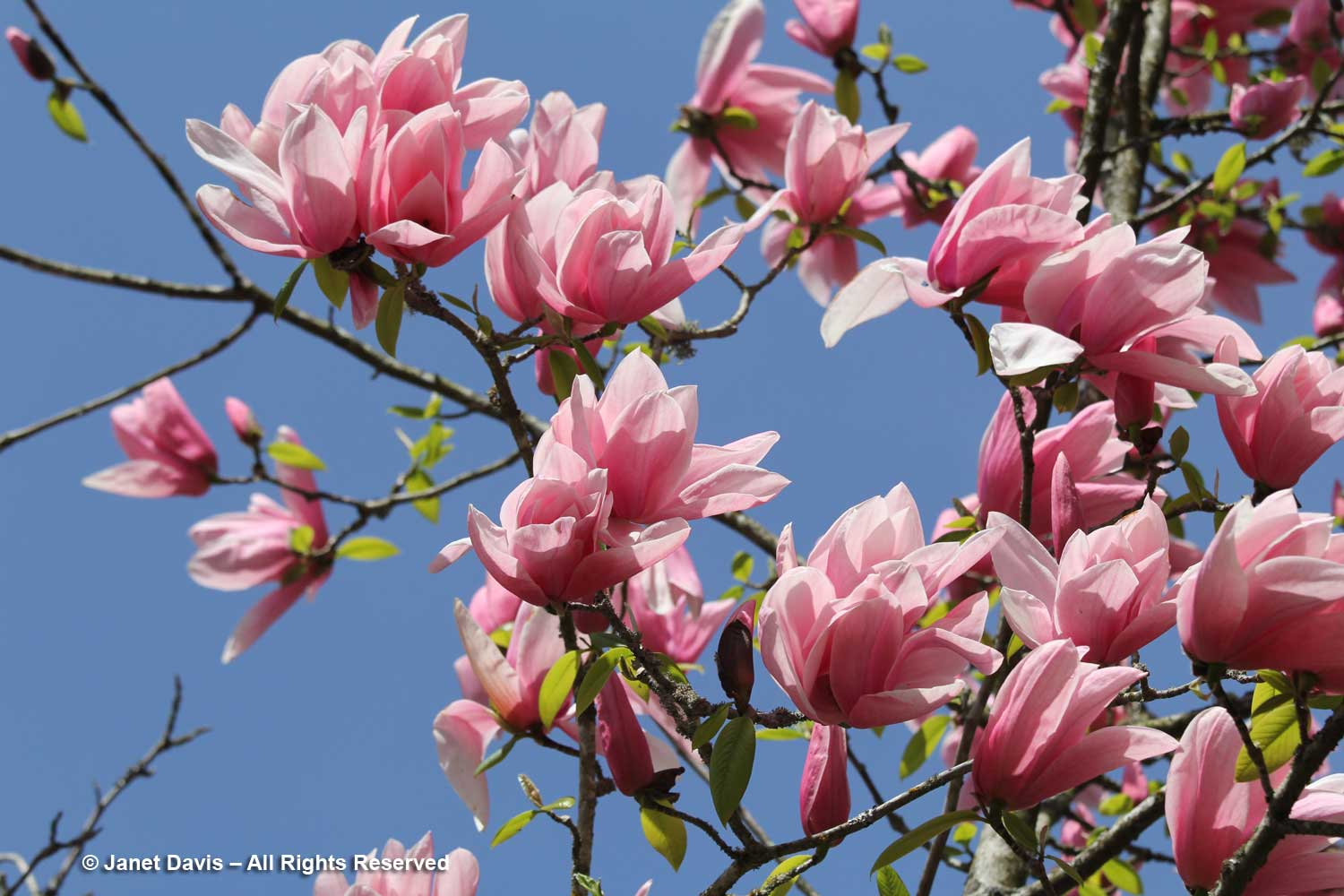
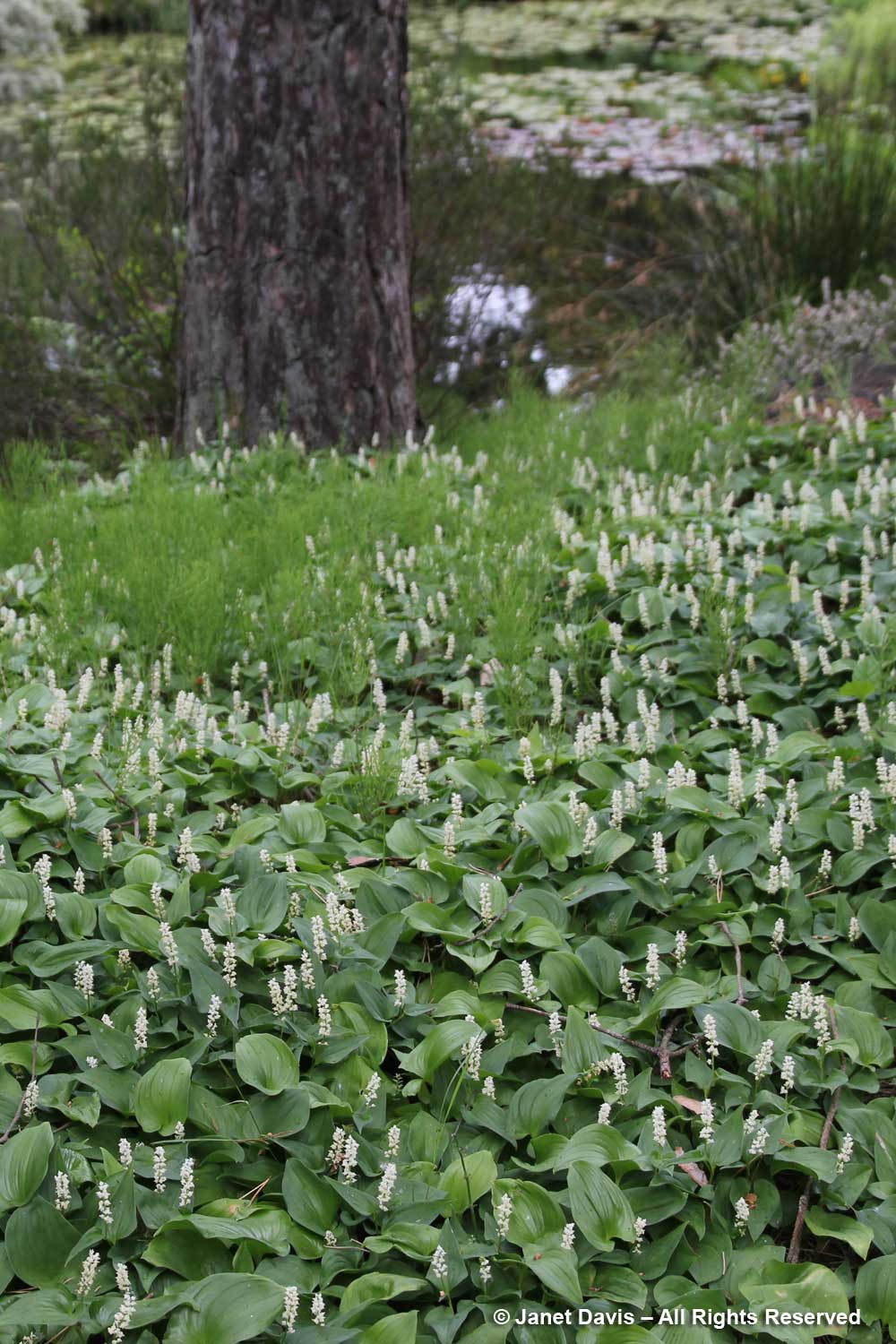
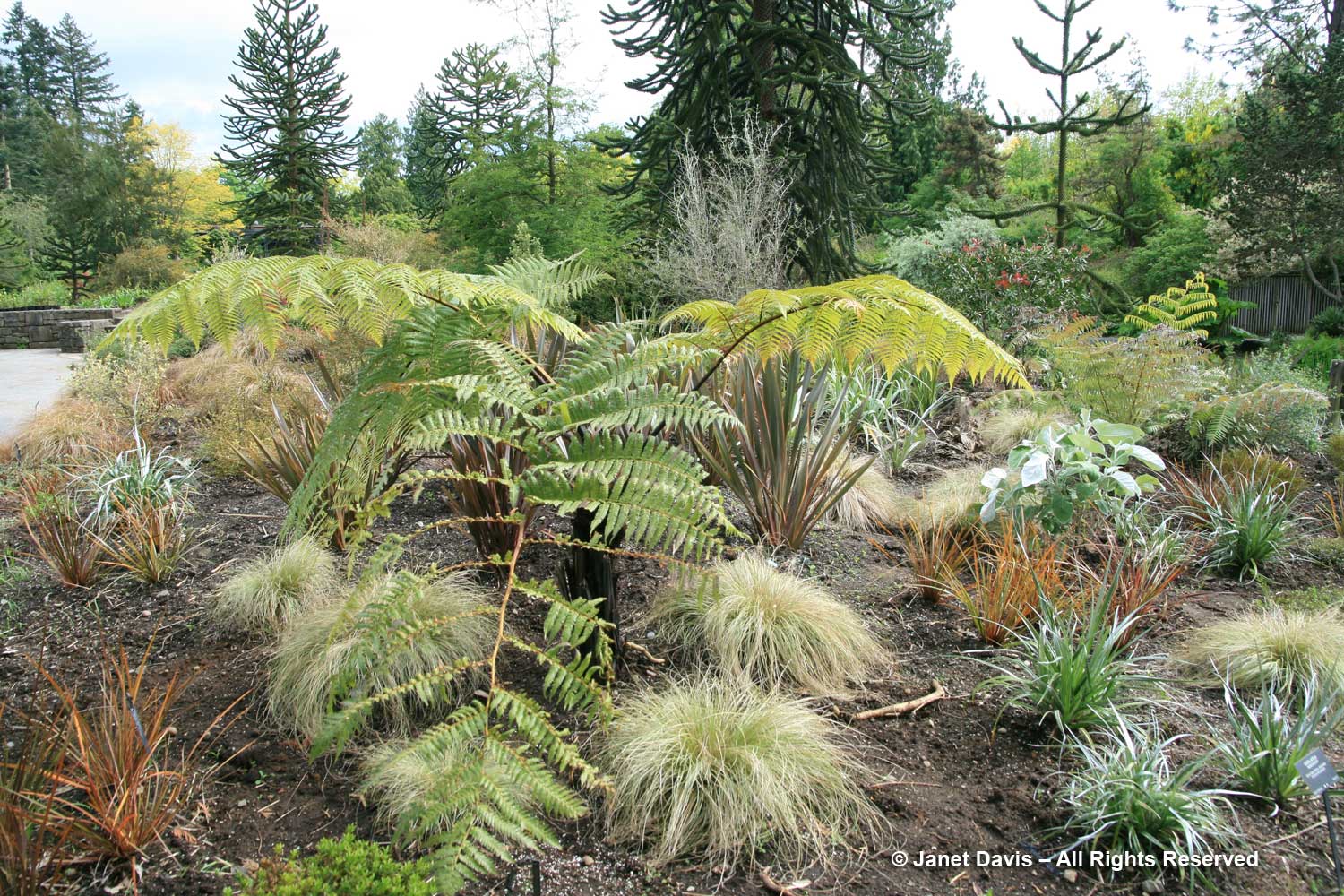
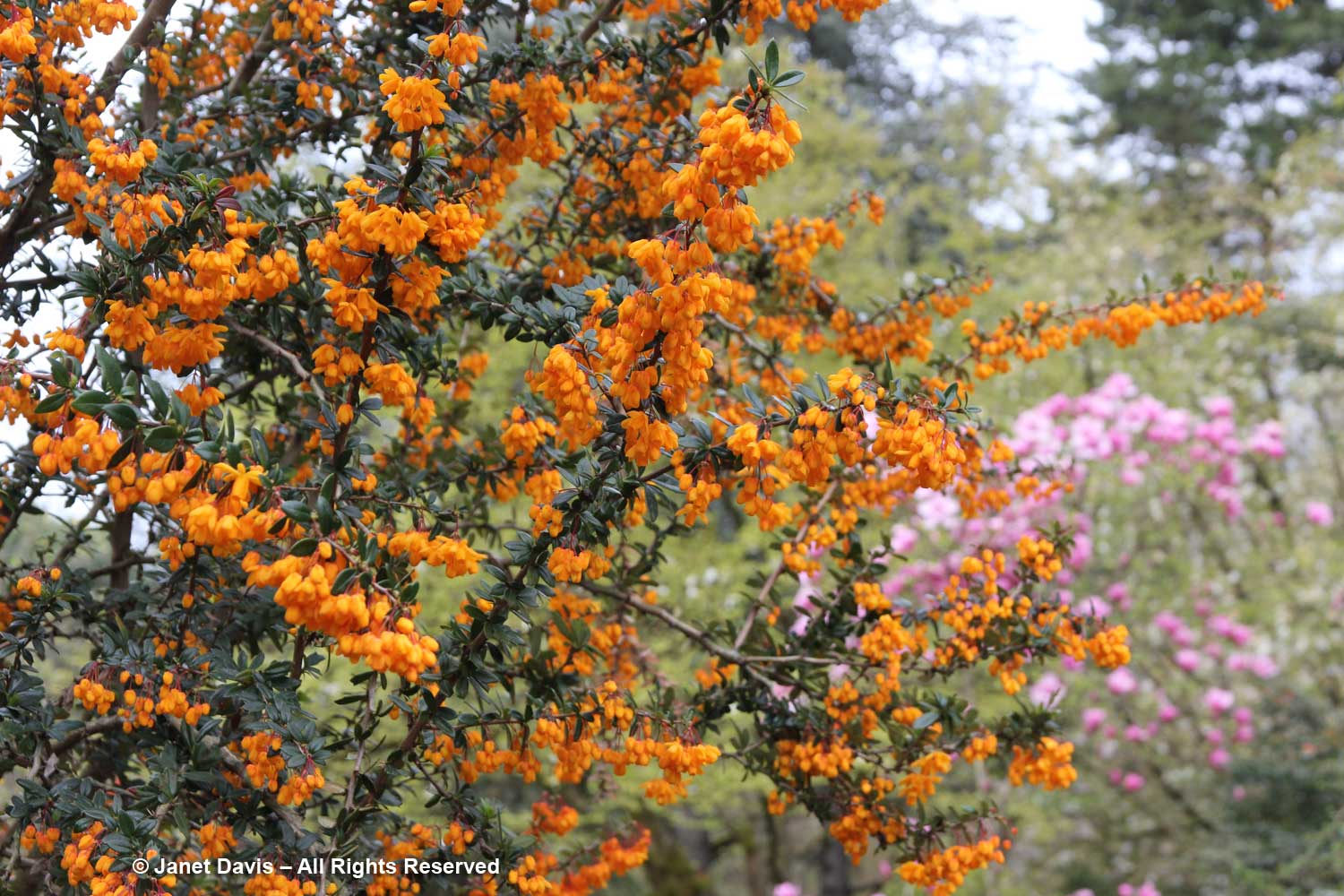
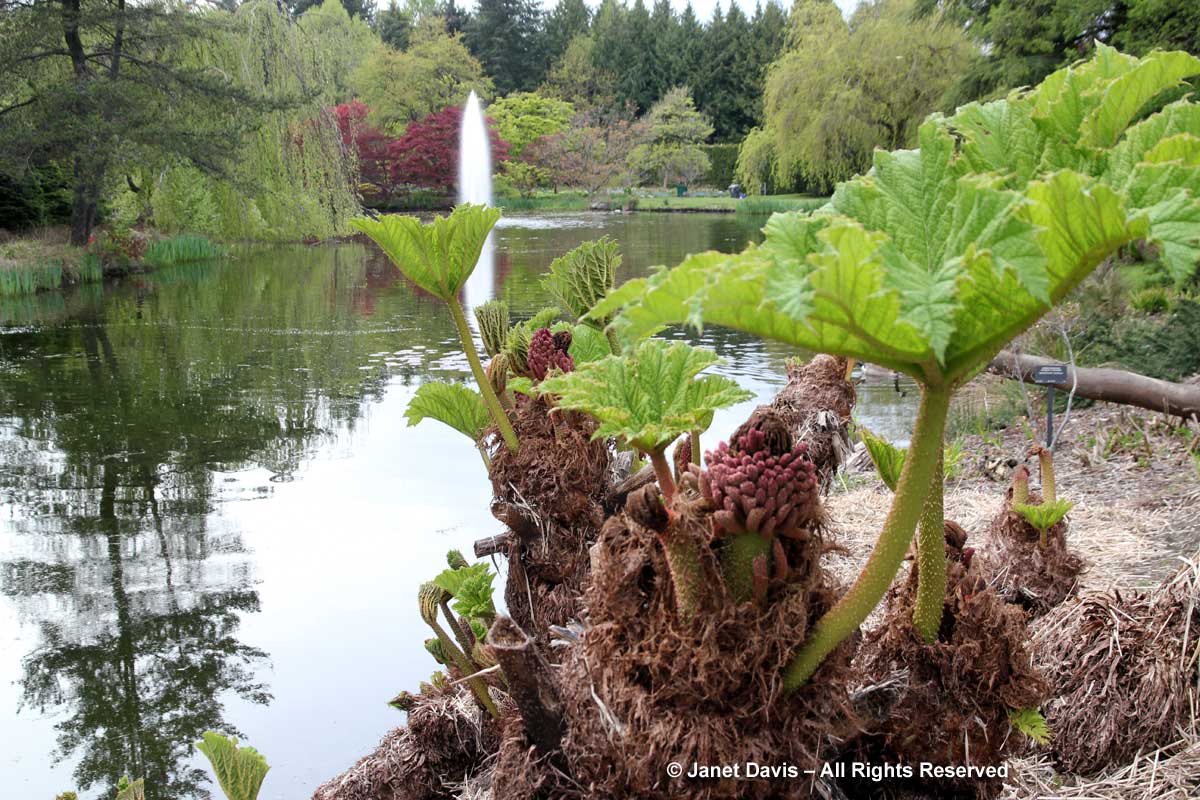
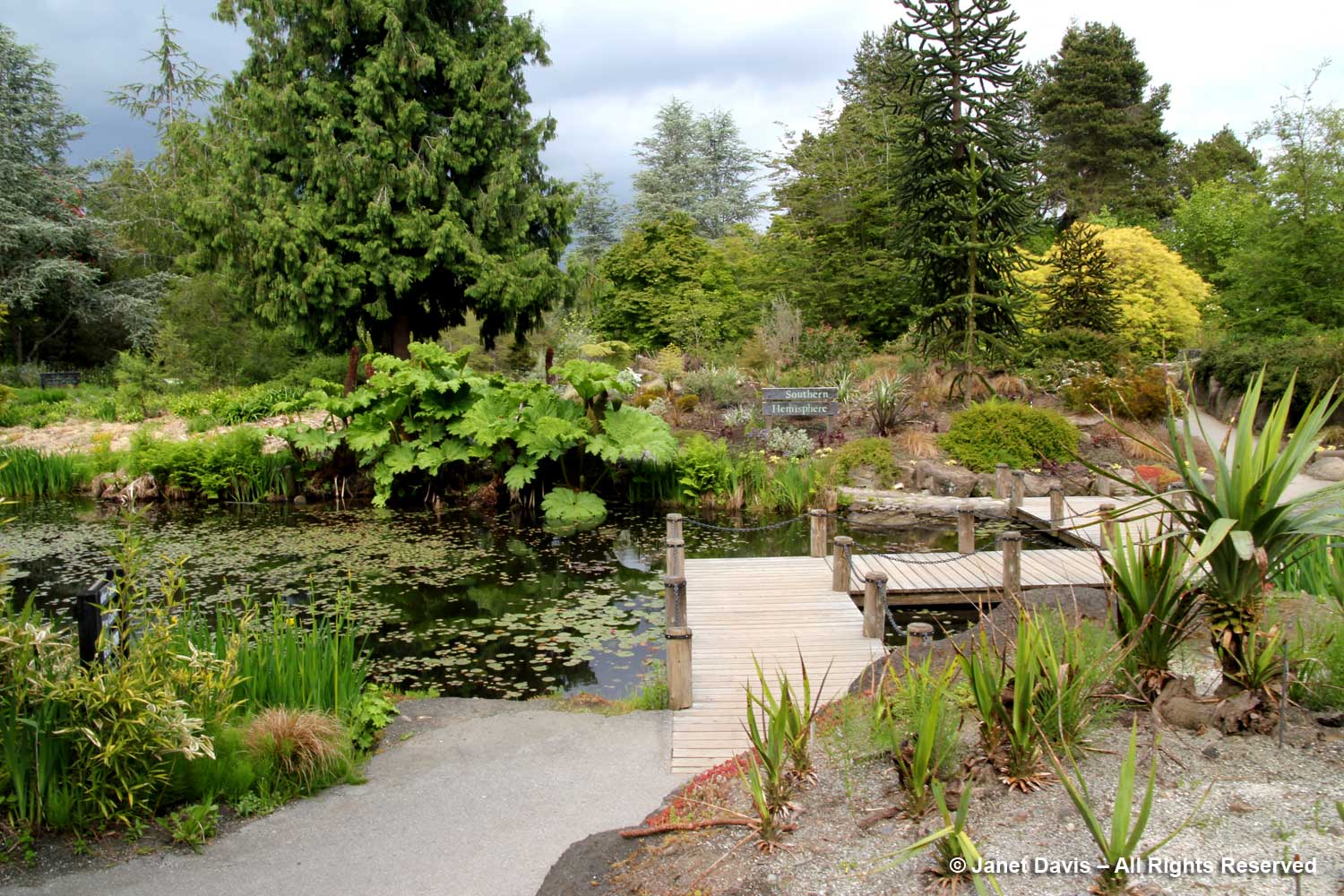

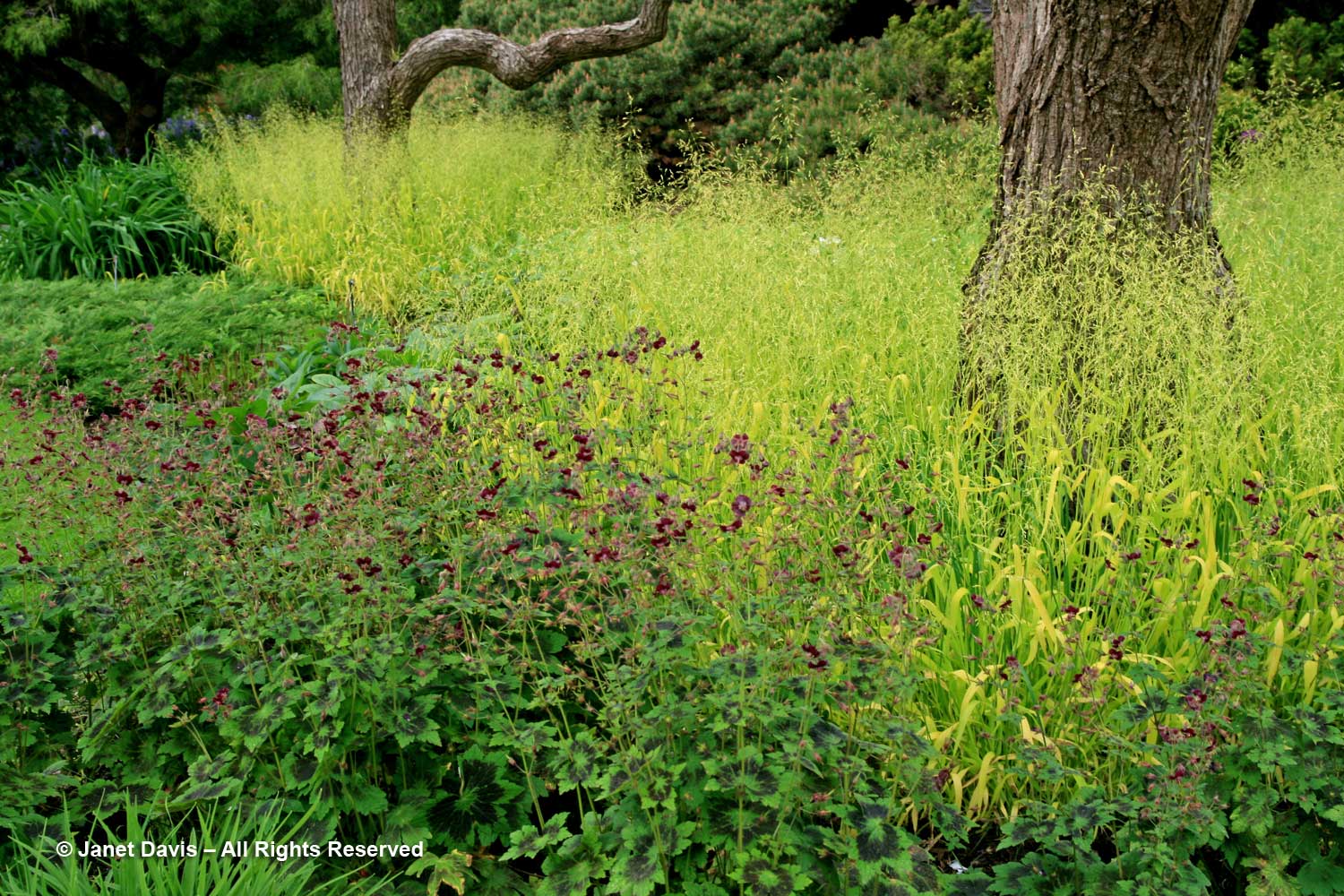
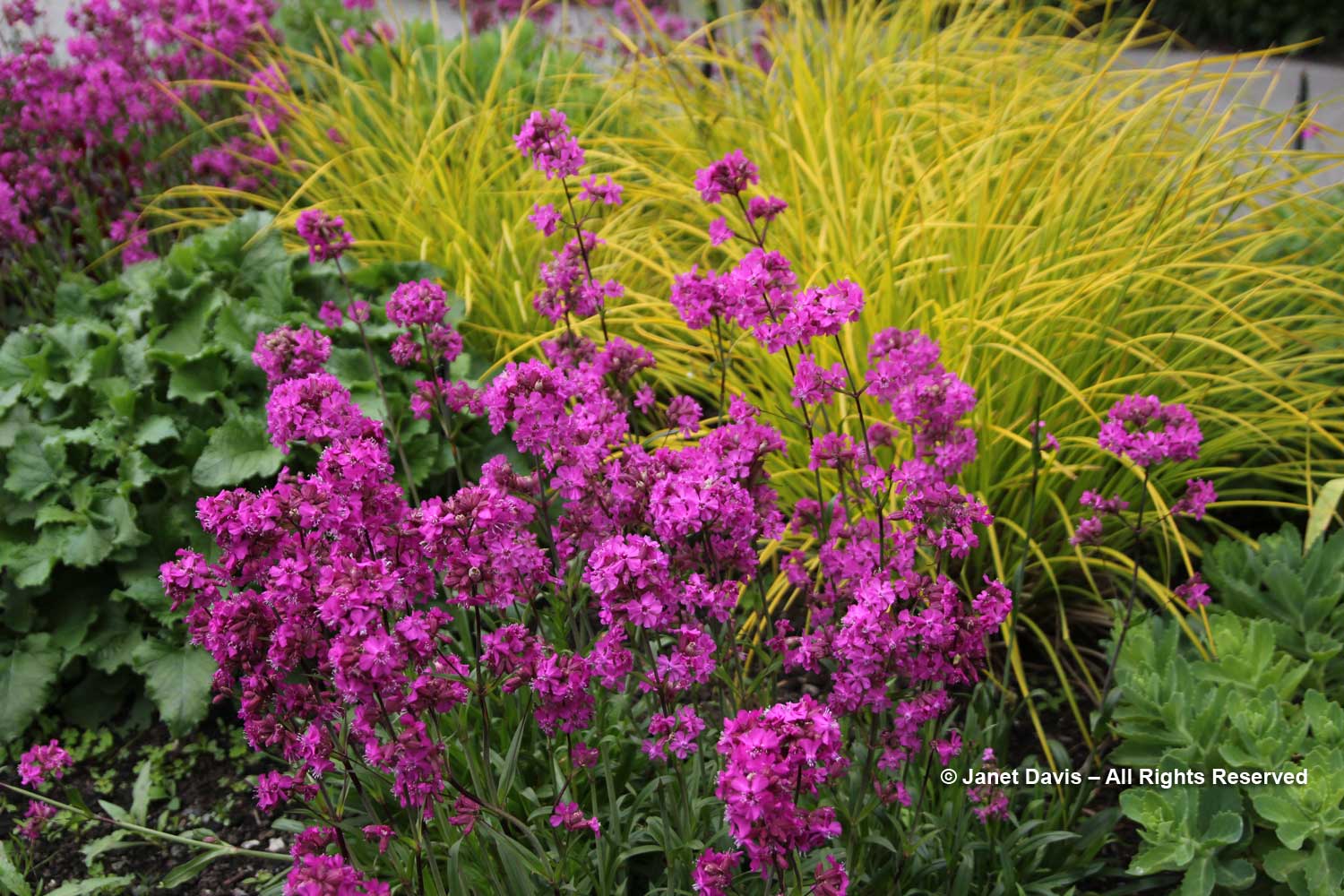
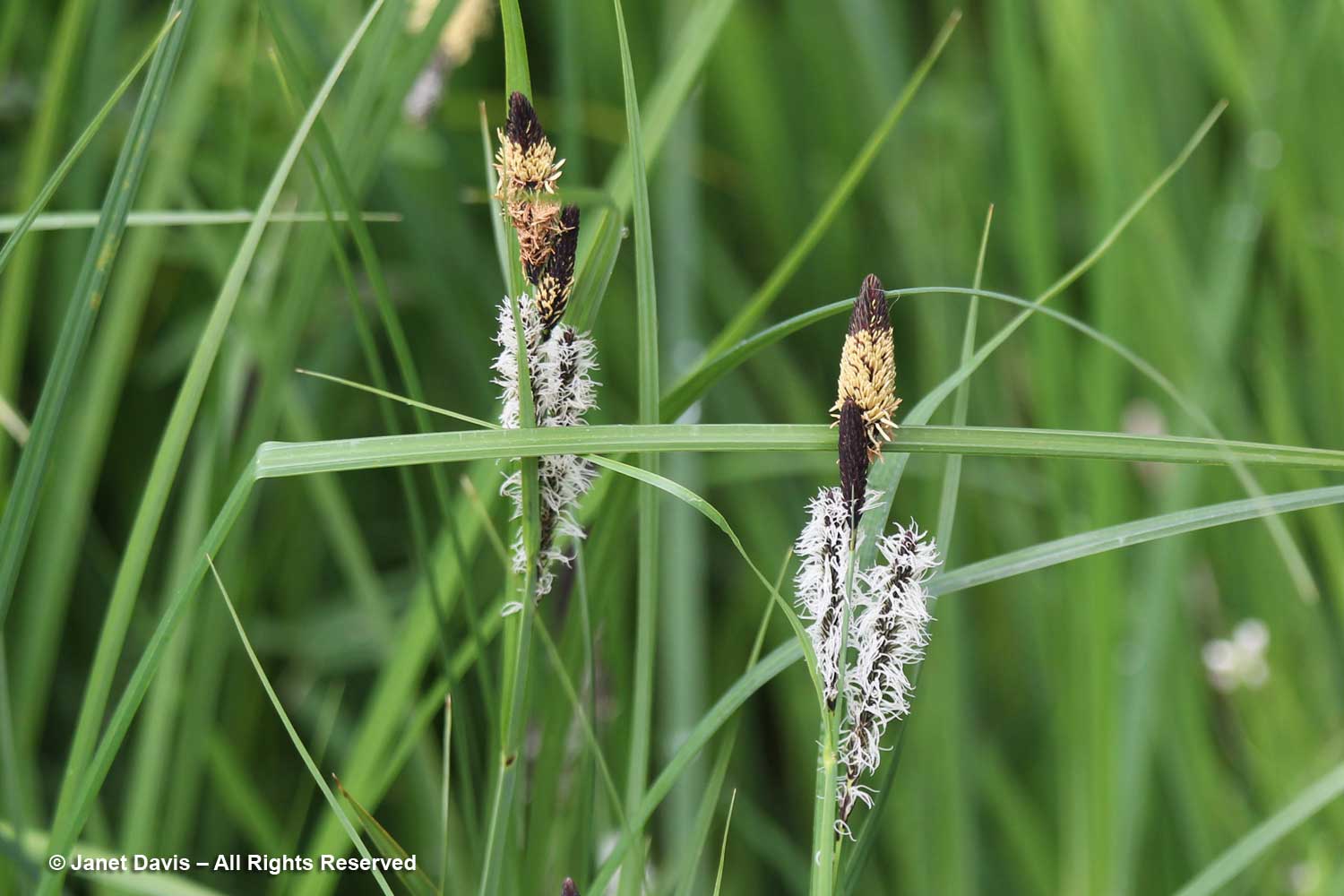
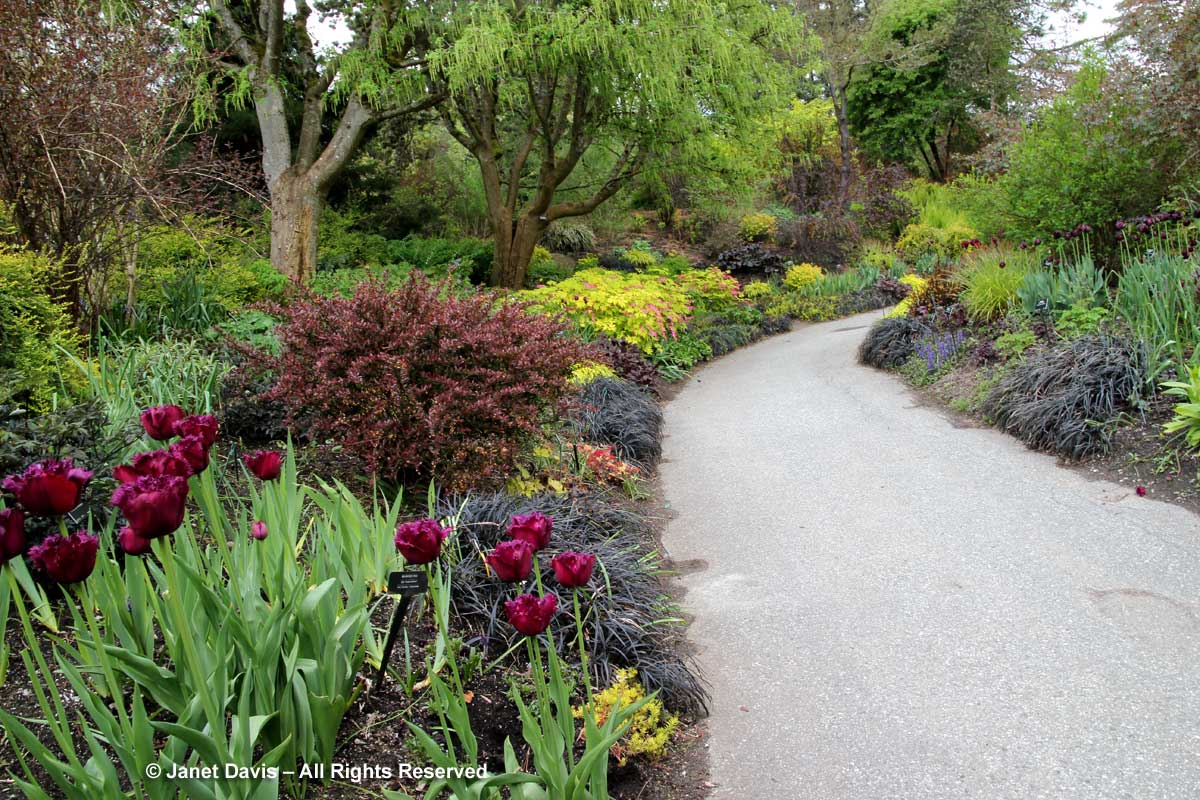
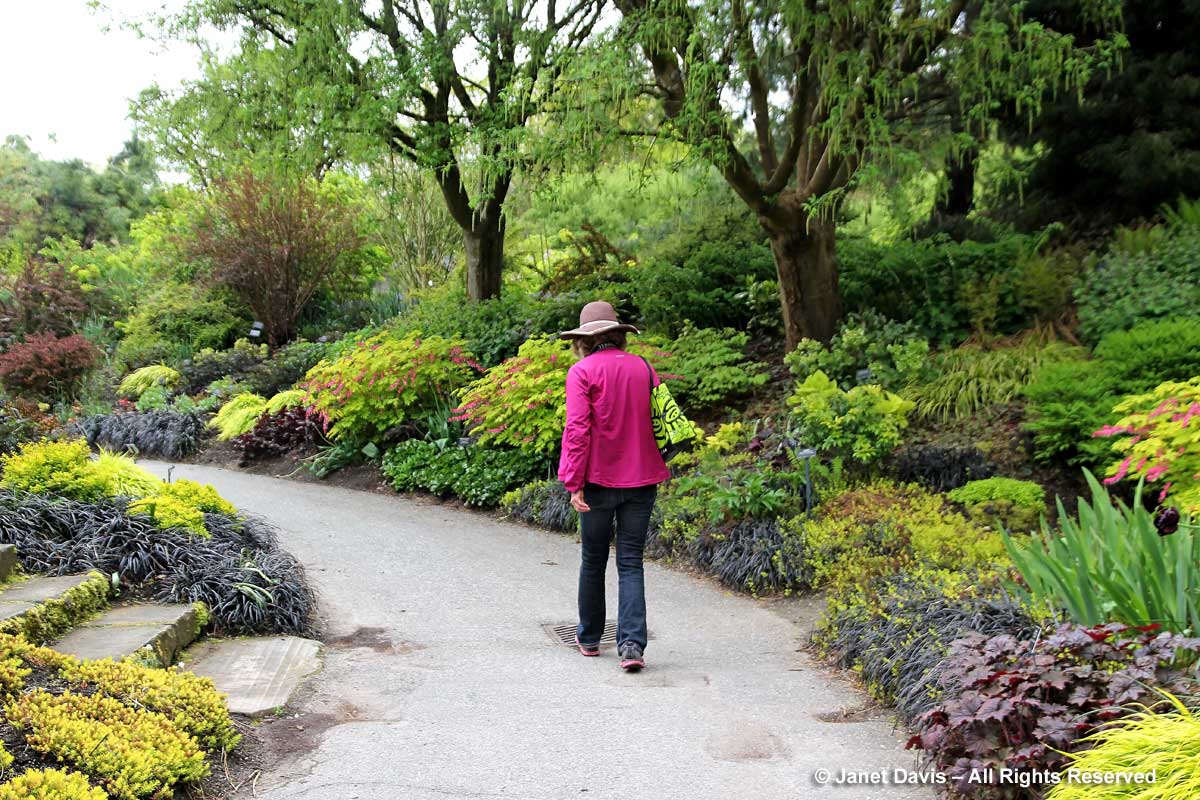
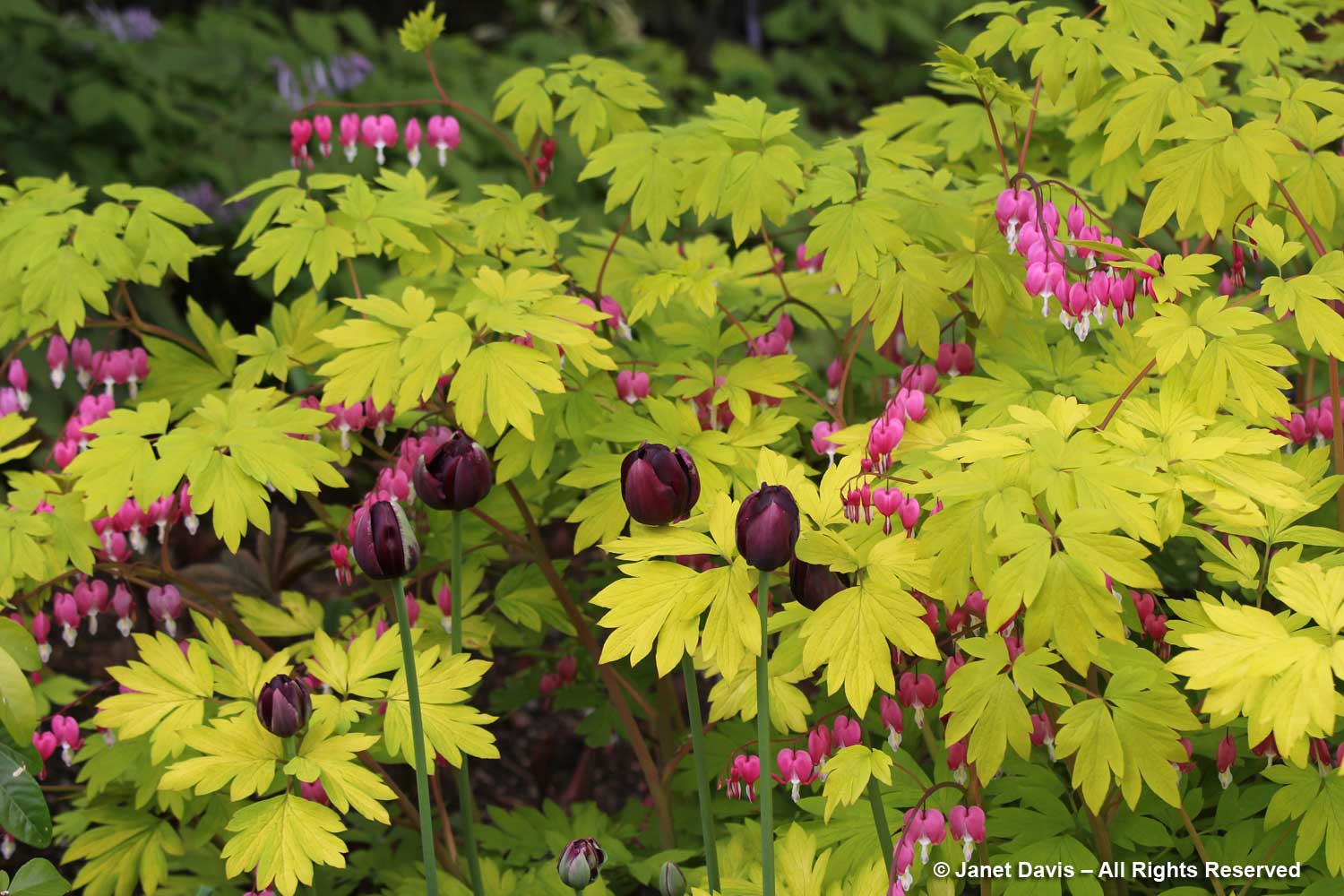
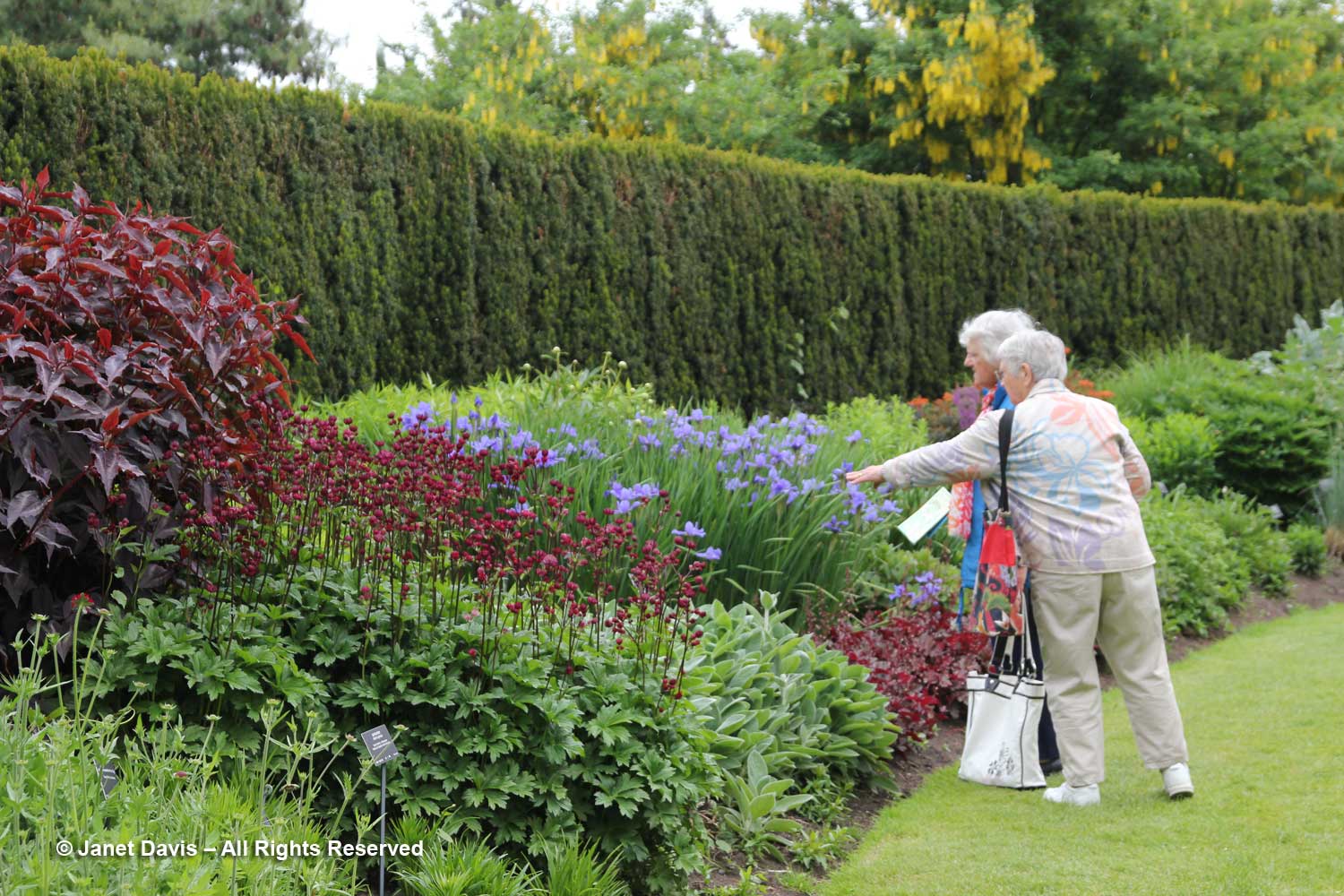
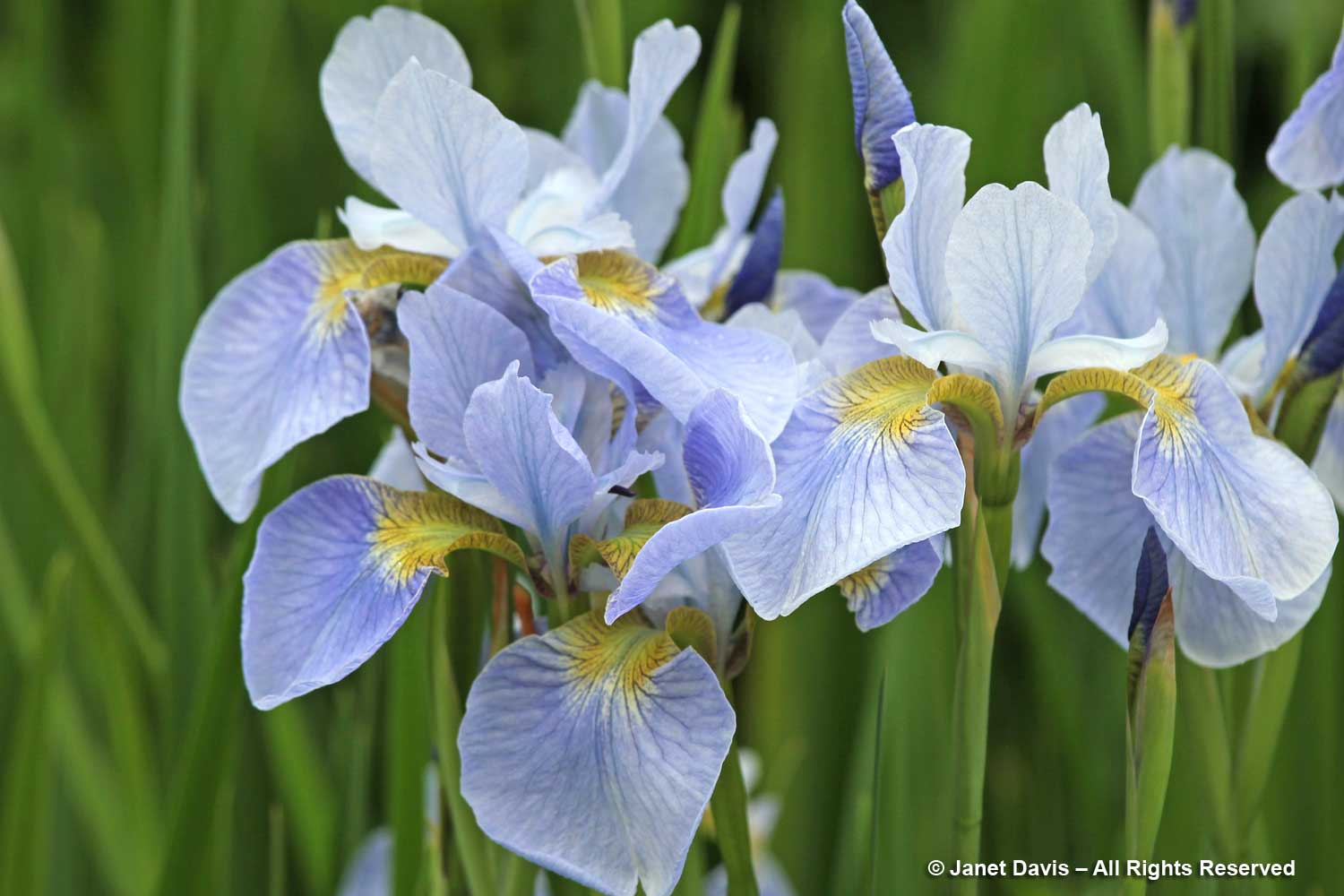
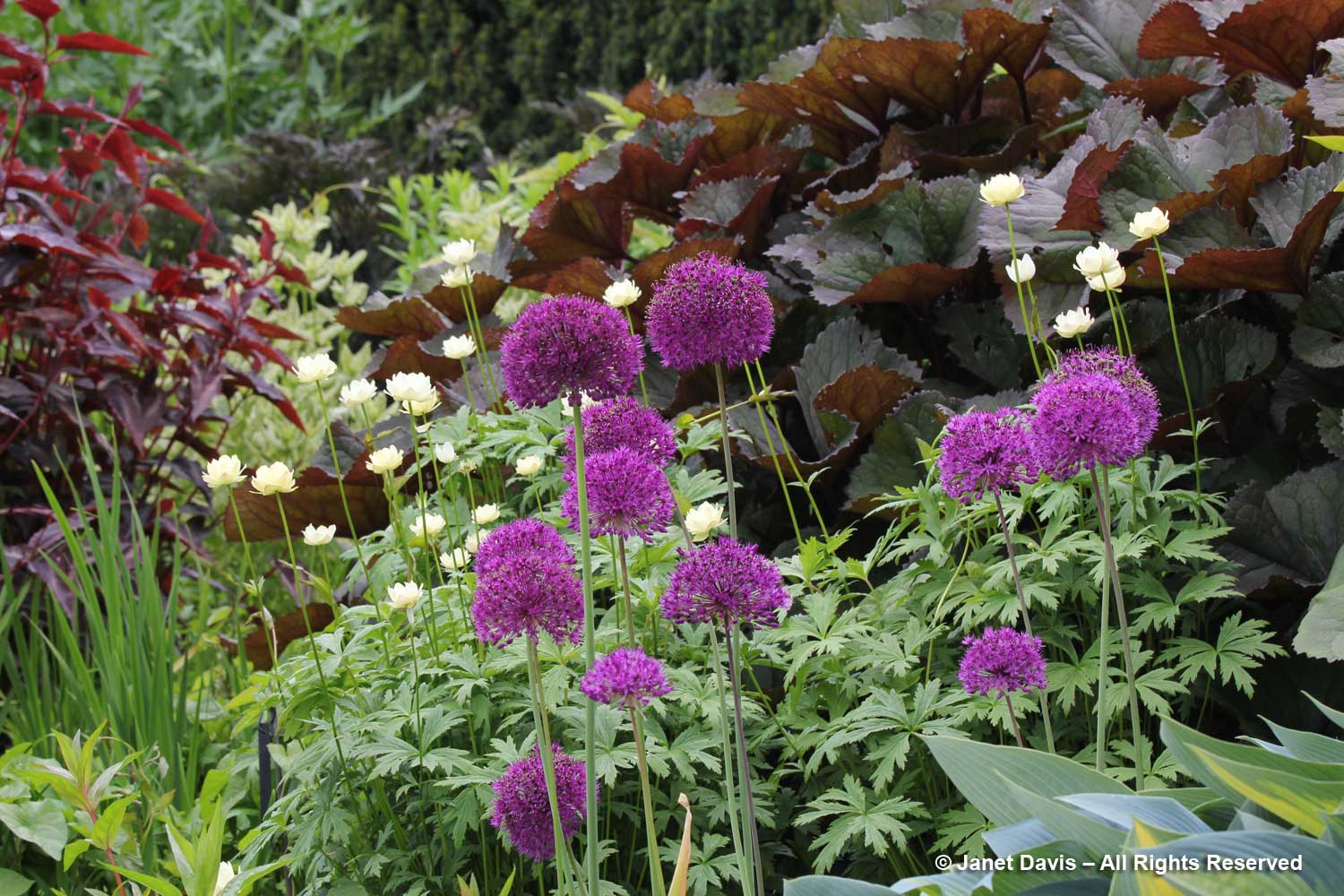
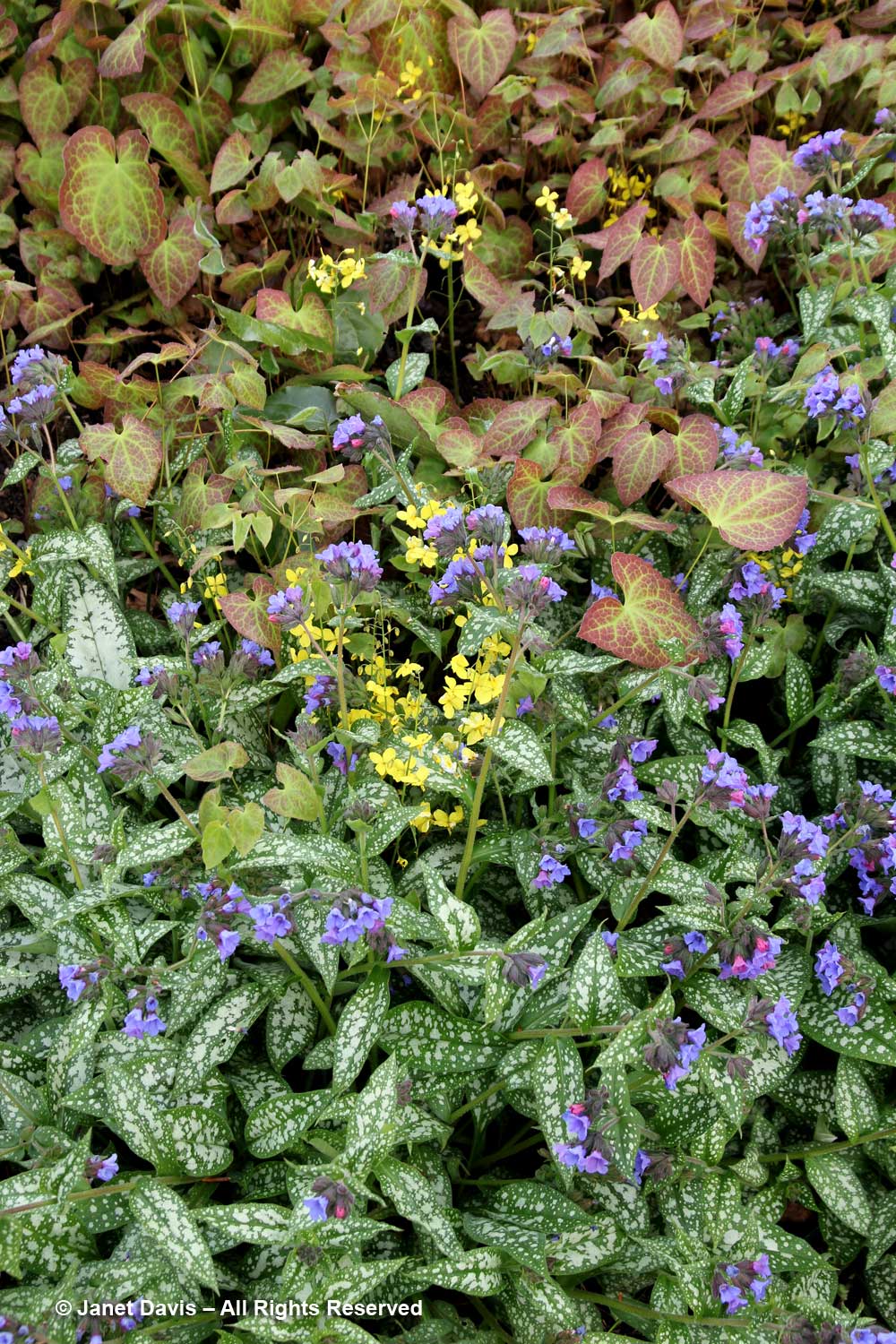
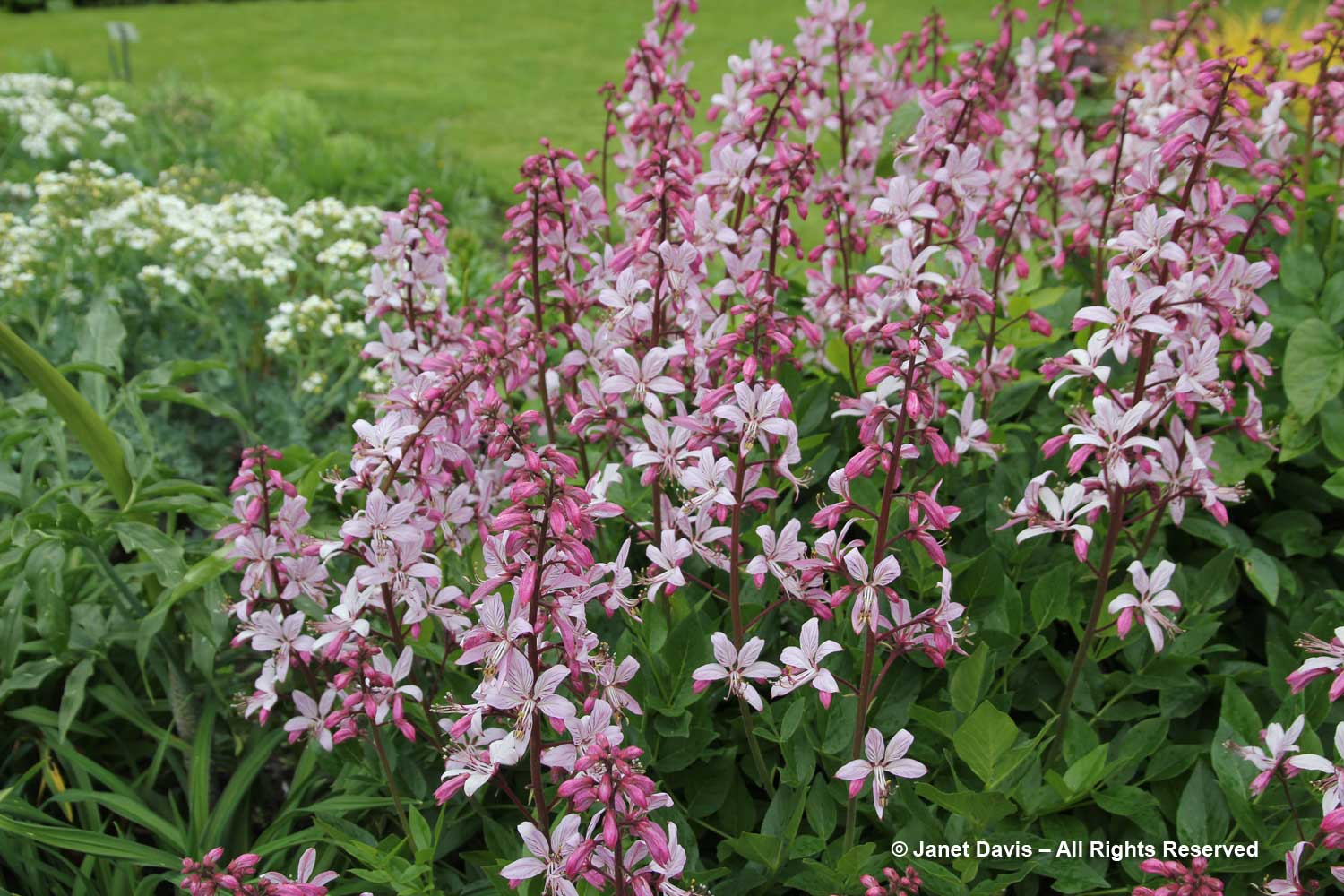
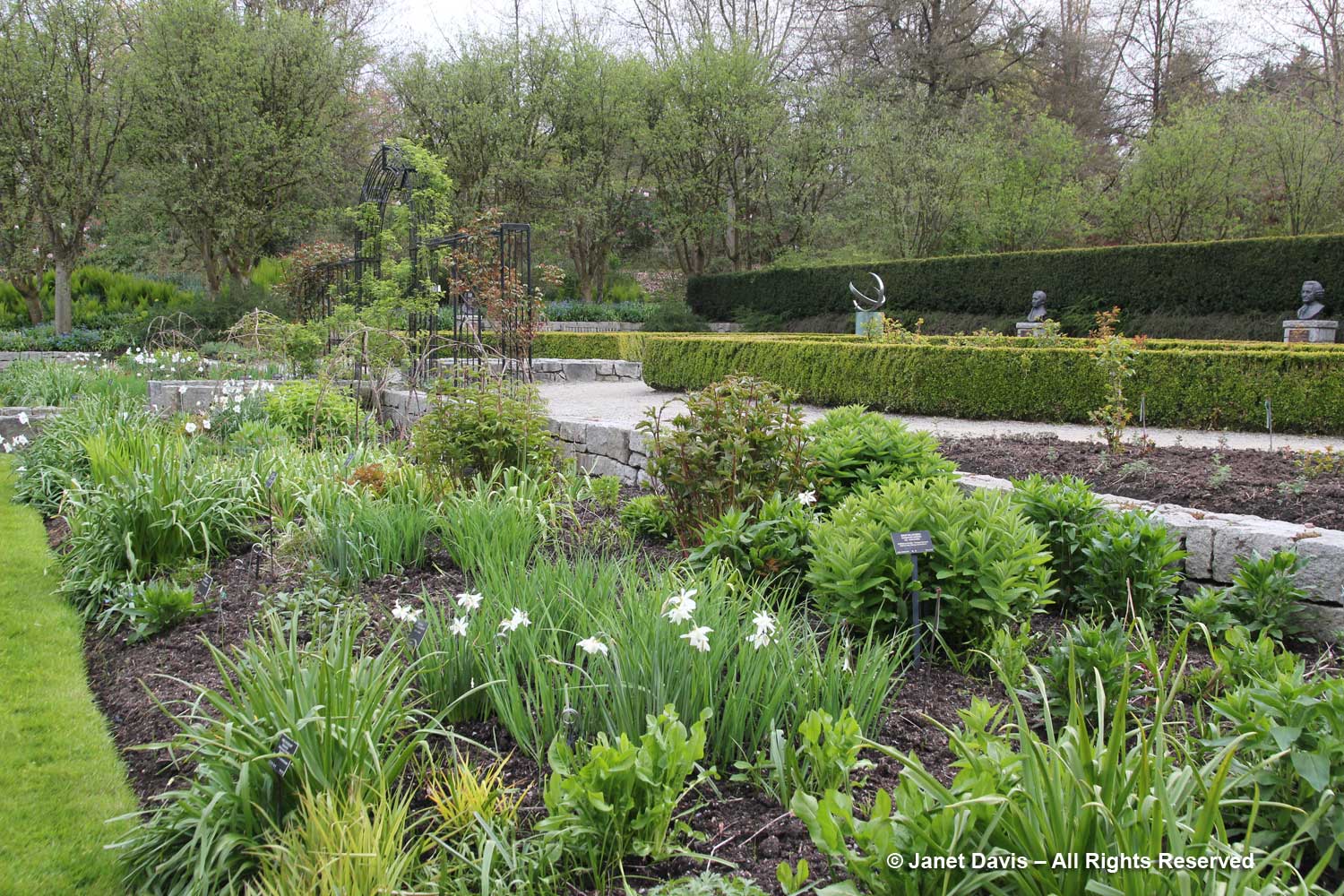
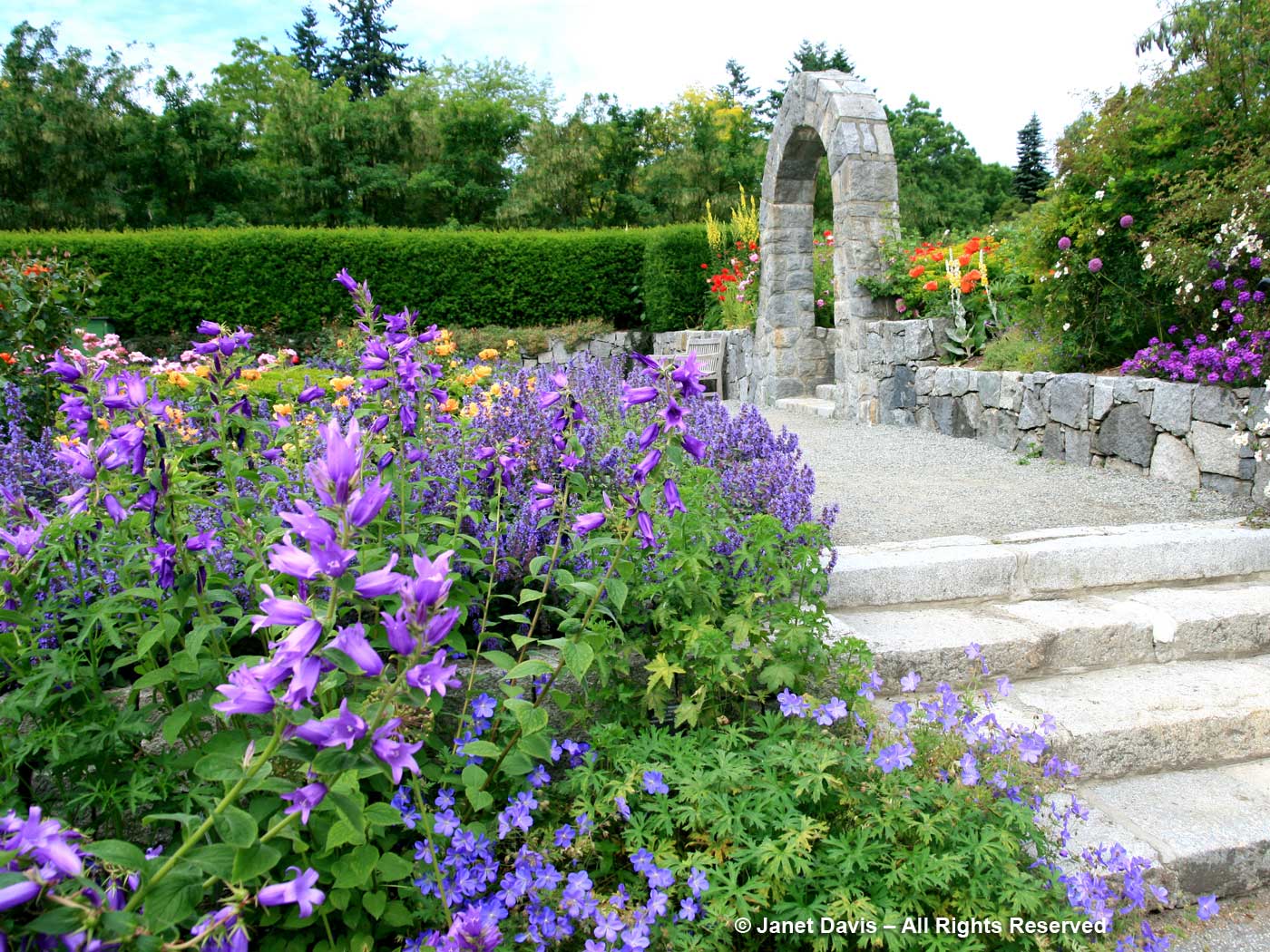
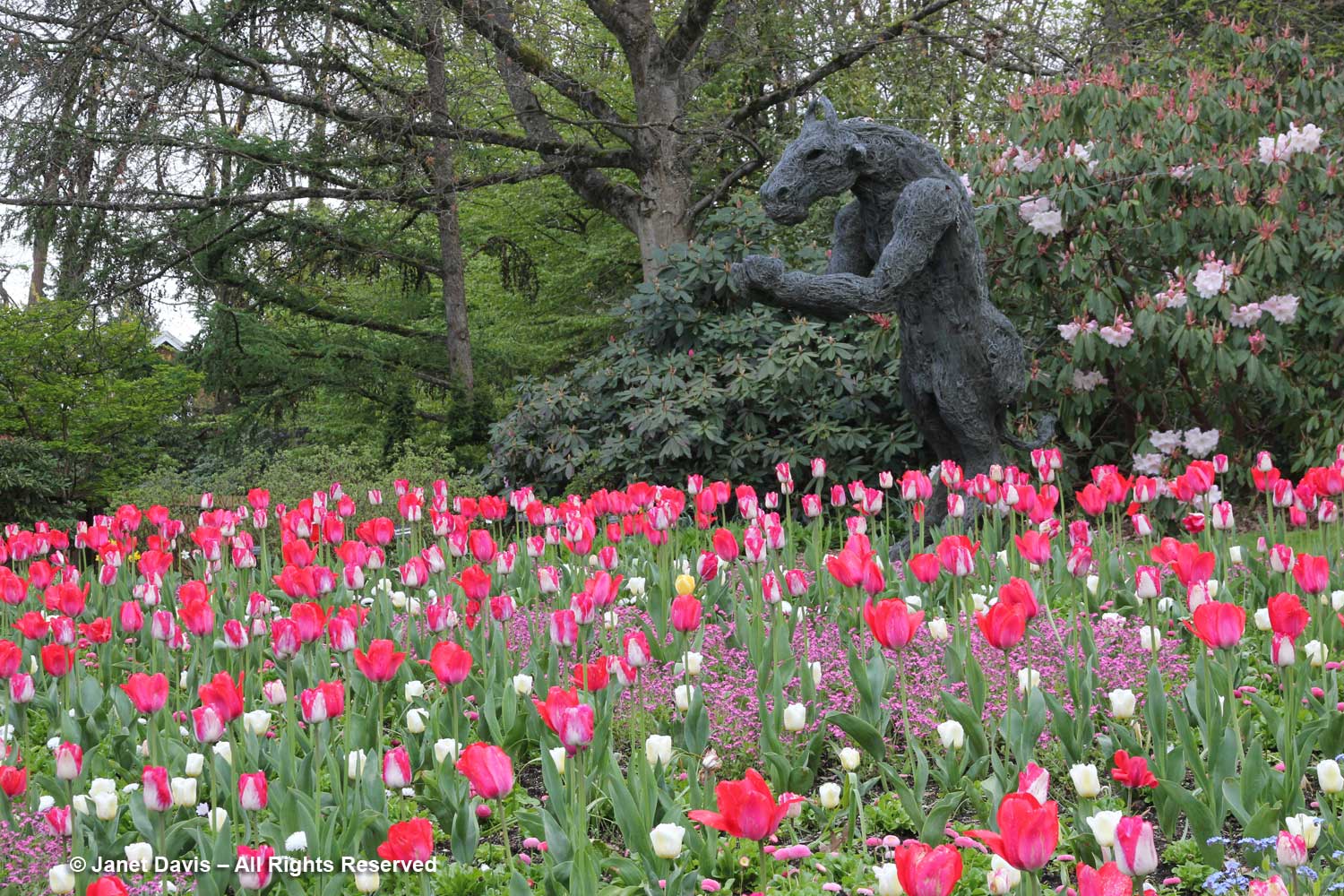
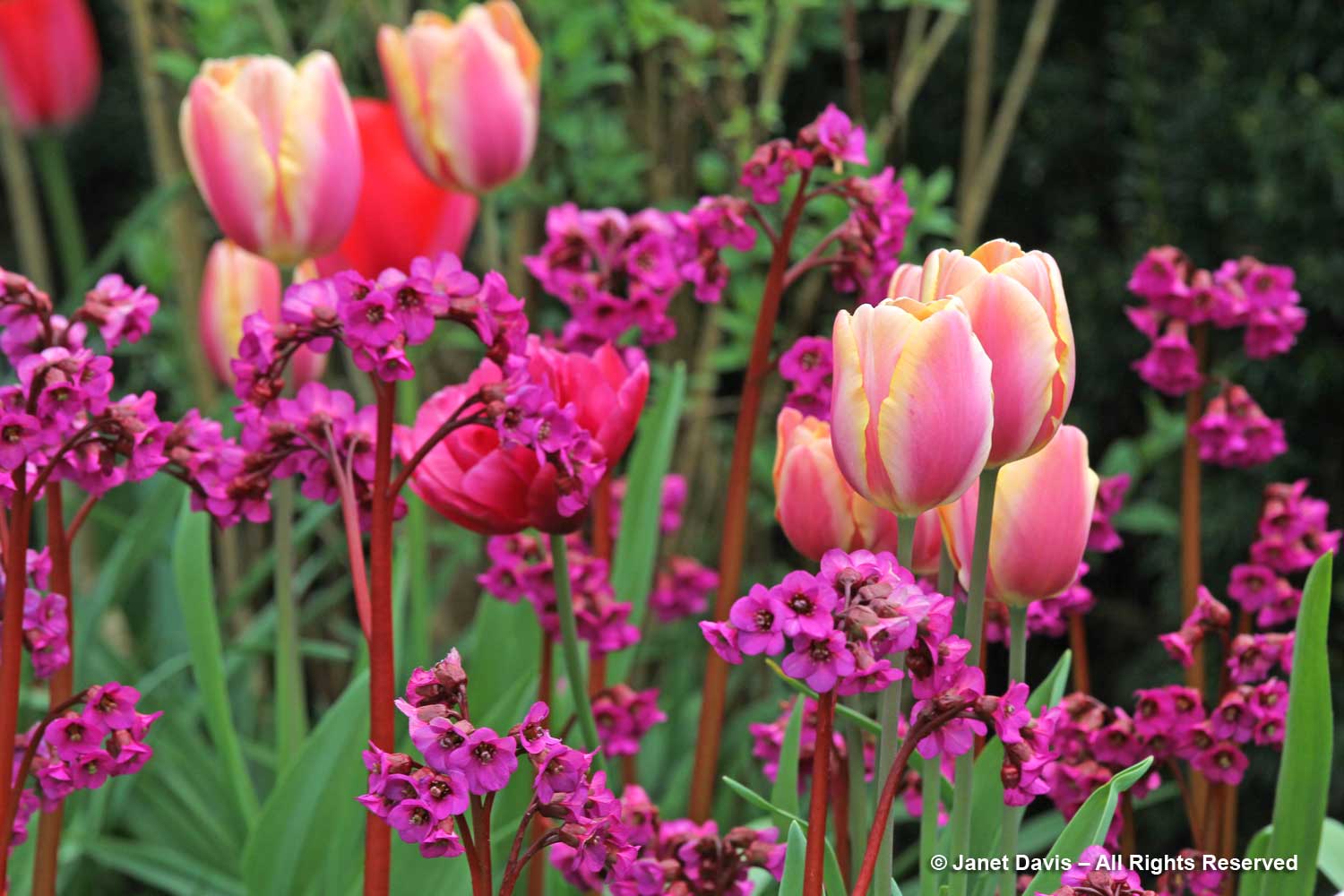
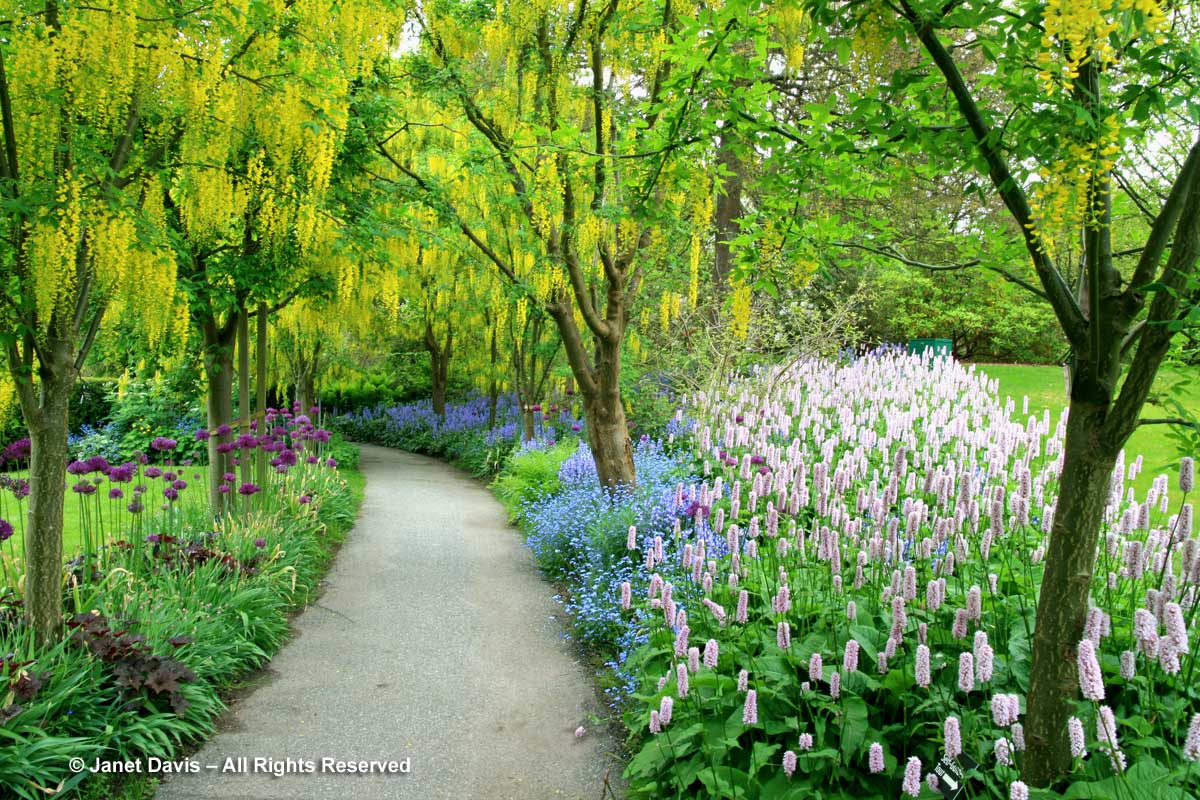
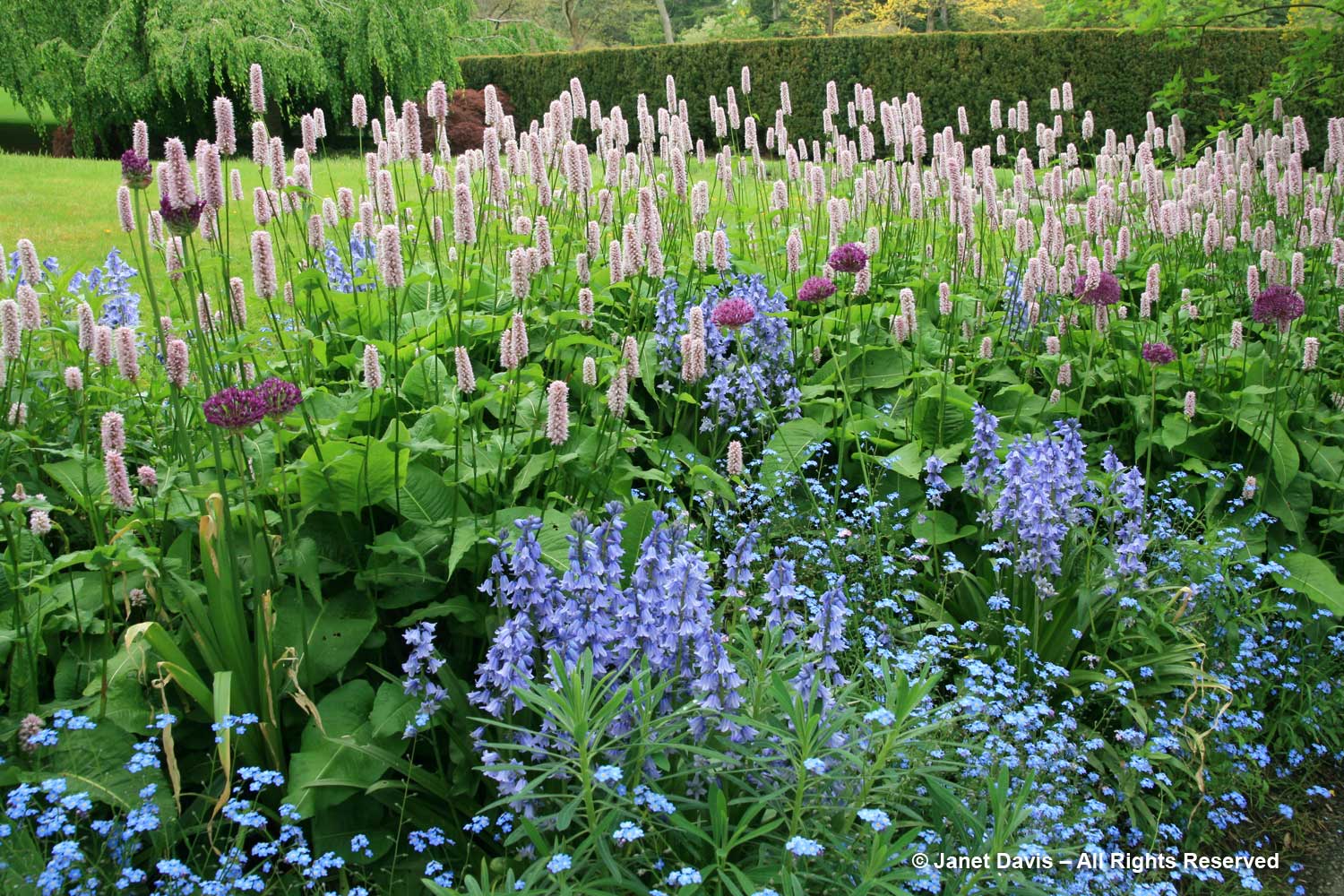
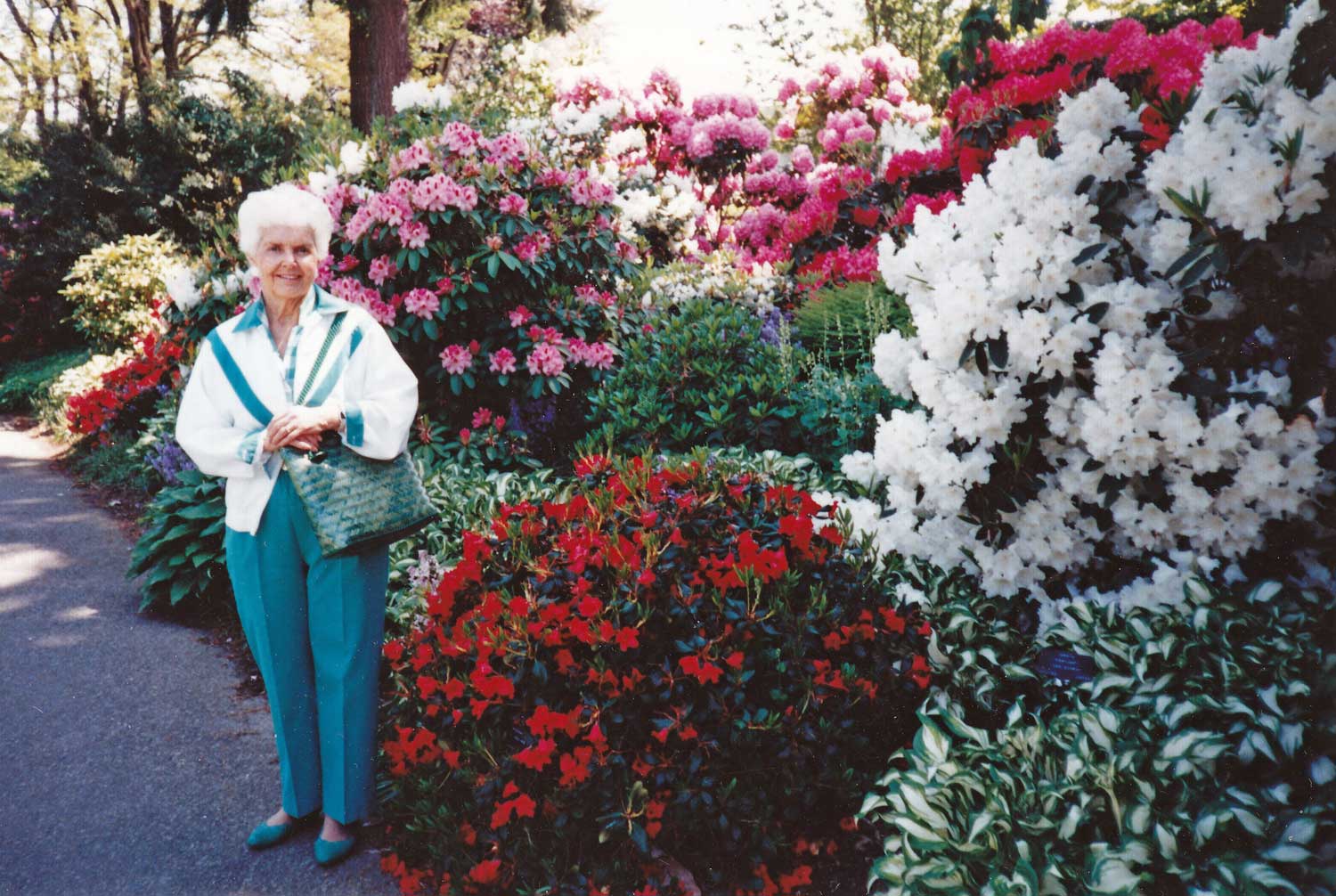
I hope to visit this garden some day. I think the golden chain tree walk is just magical.
Thank you, Jessica. VanDusen is a MUST if you go to Vancouver. And two great spots to have lunch, so make a day of it.
I stood under that laburnum arch on a gray drizzly day and it felt like the sun had come out. Another great post Janet.
Thanks Donna. It is a spectacle isn’t it? I miss my laburnum this time of year. Lost it in an ice storm 7 years ago.